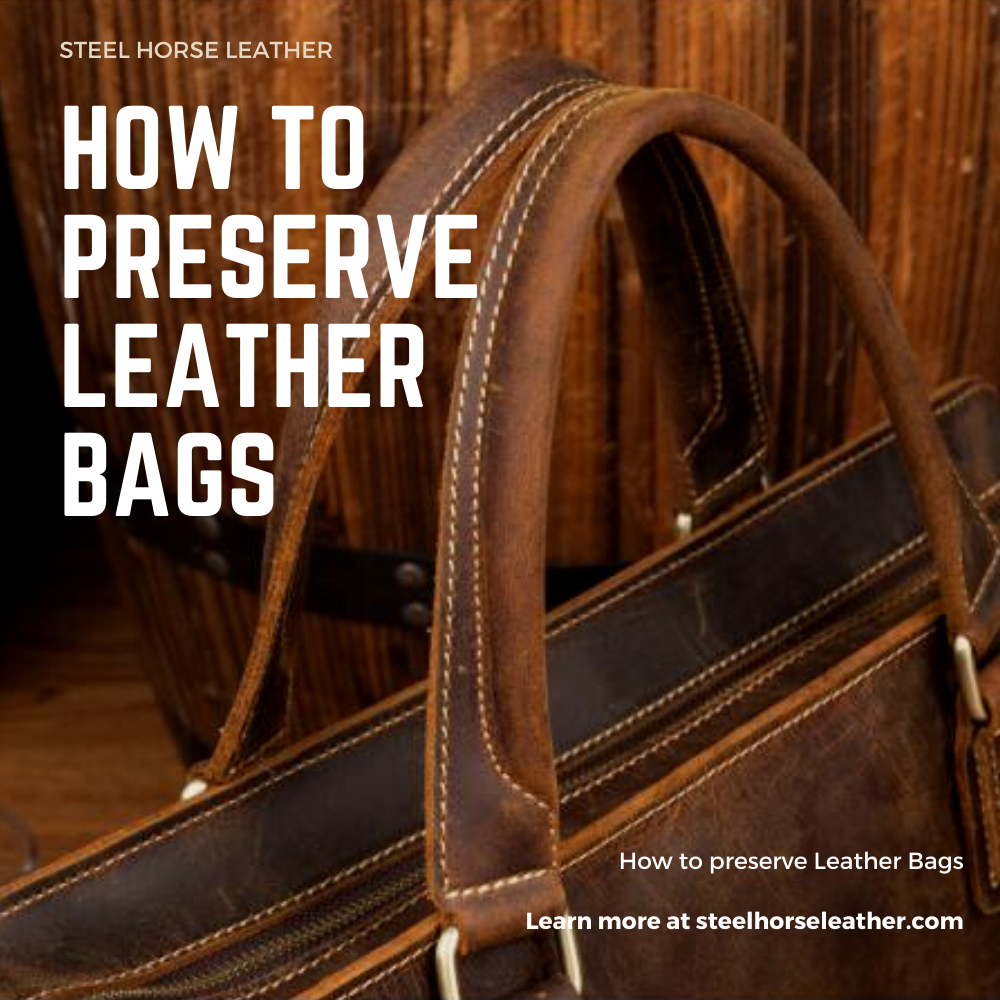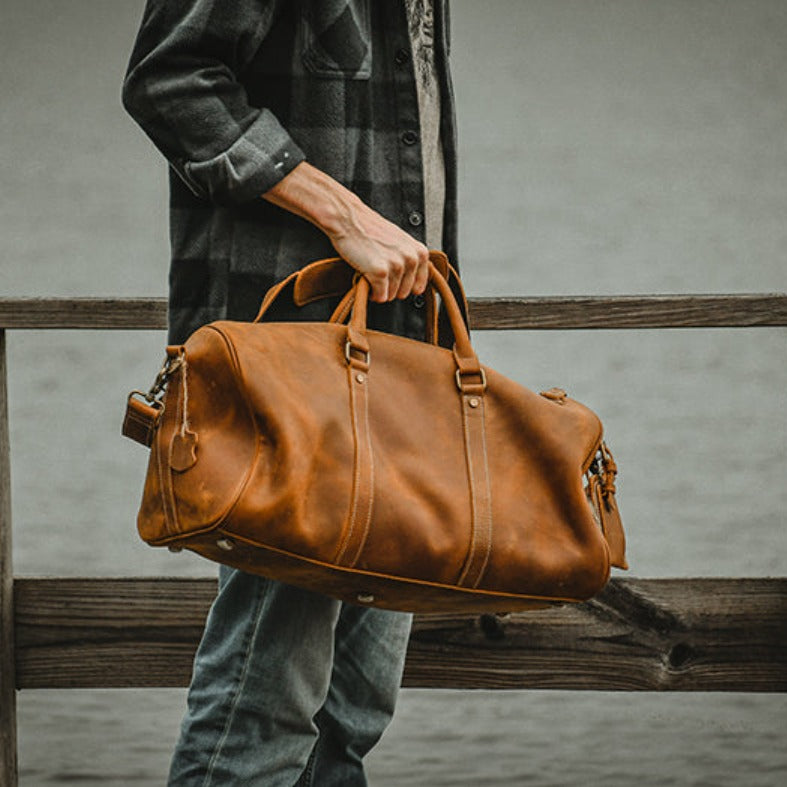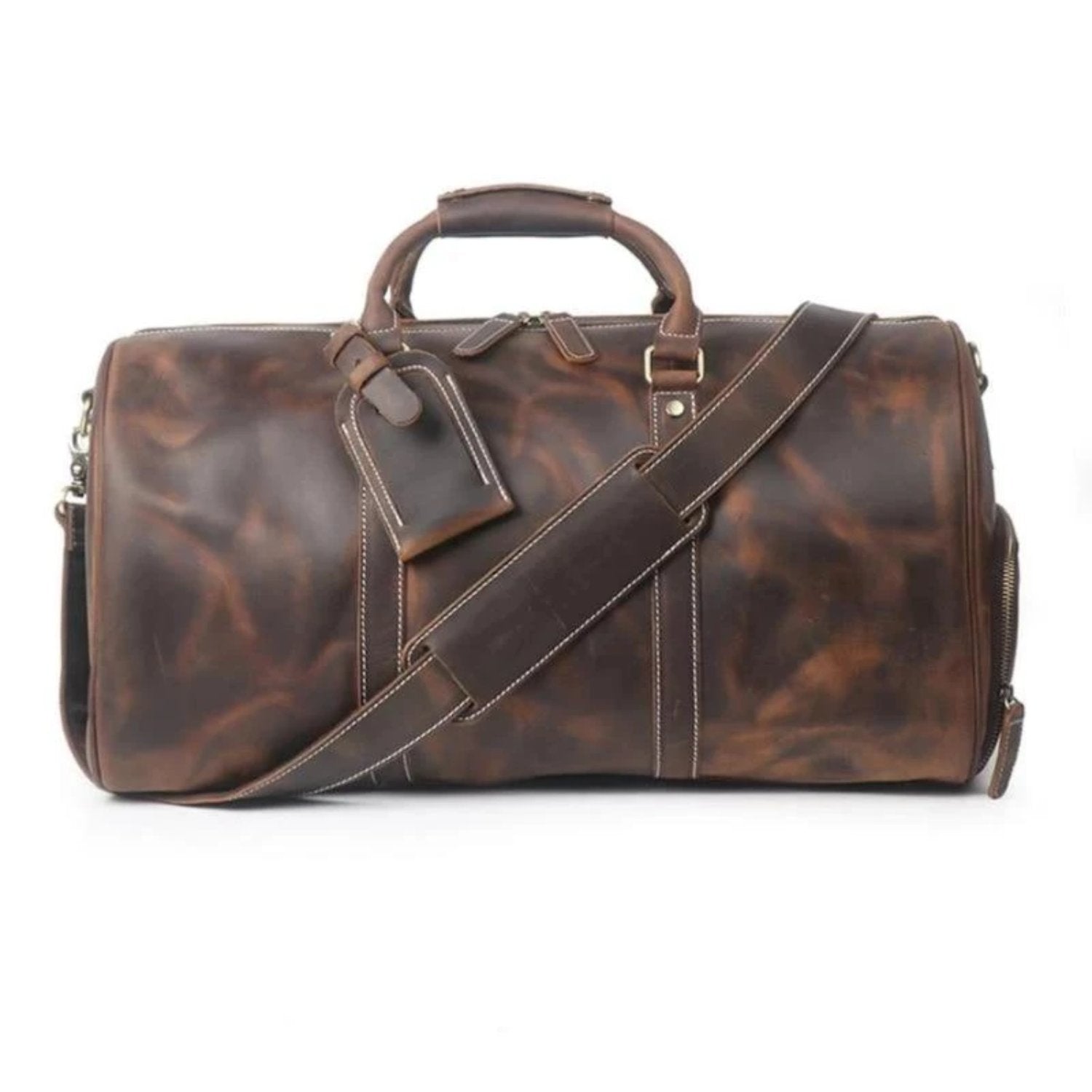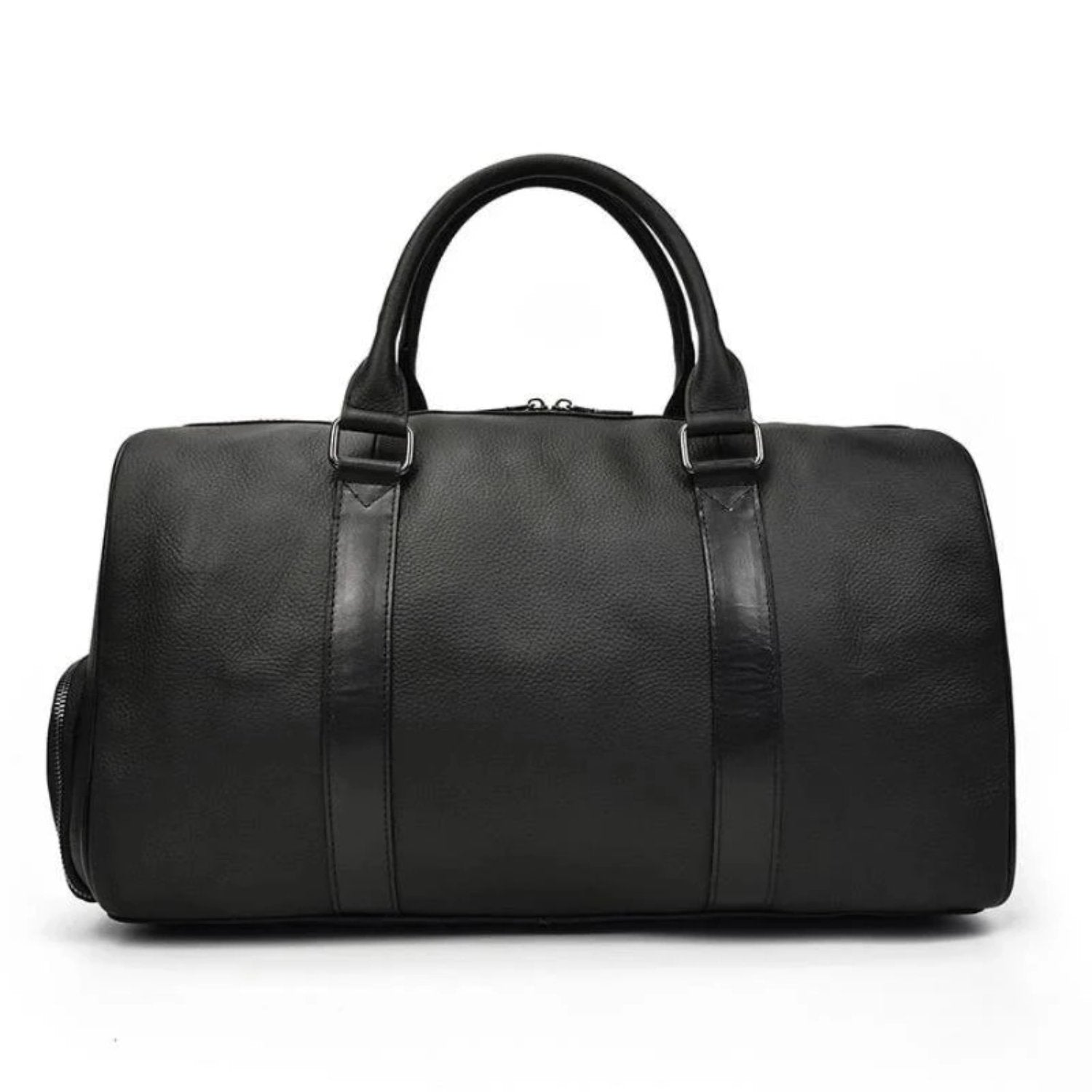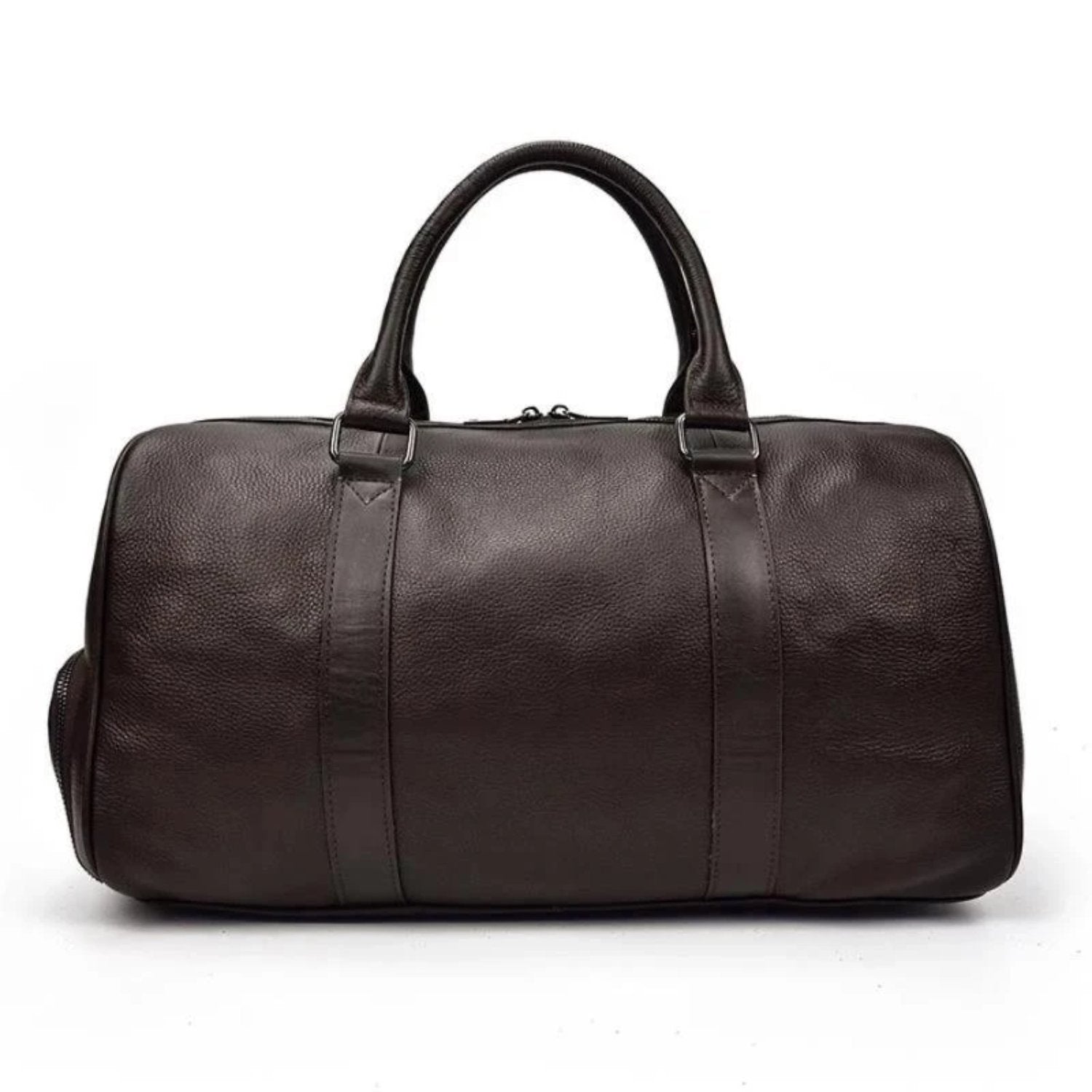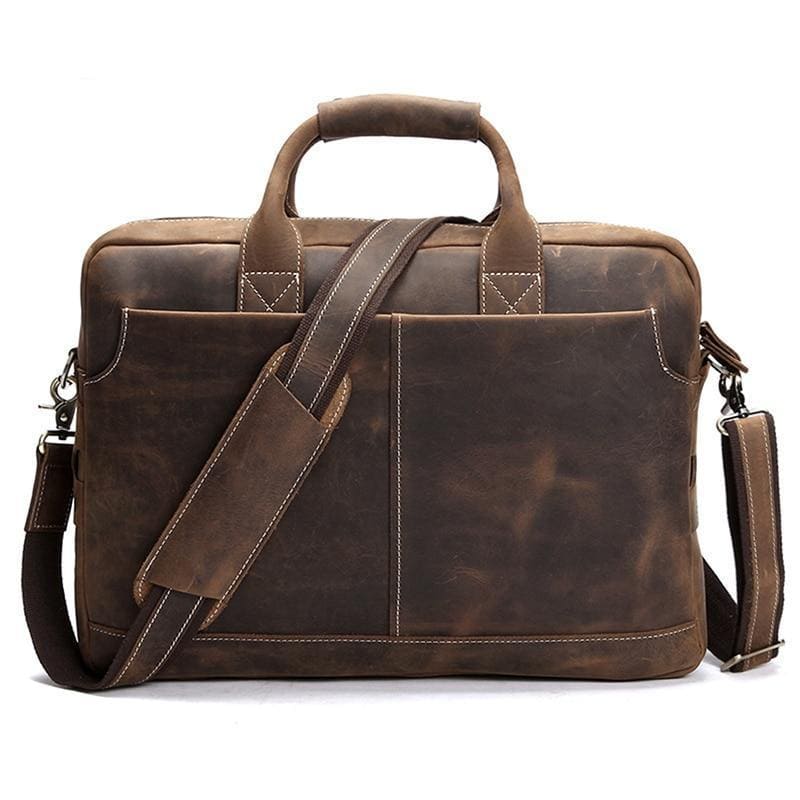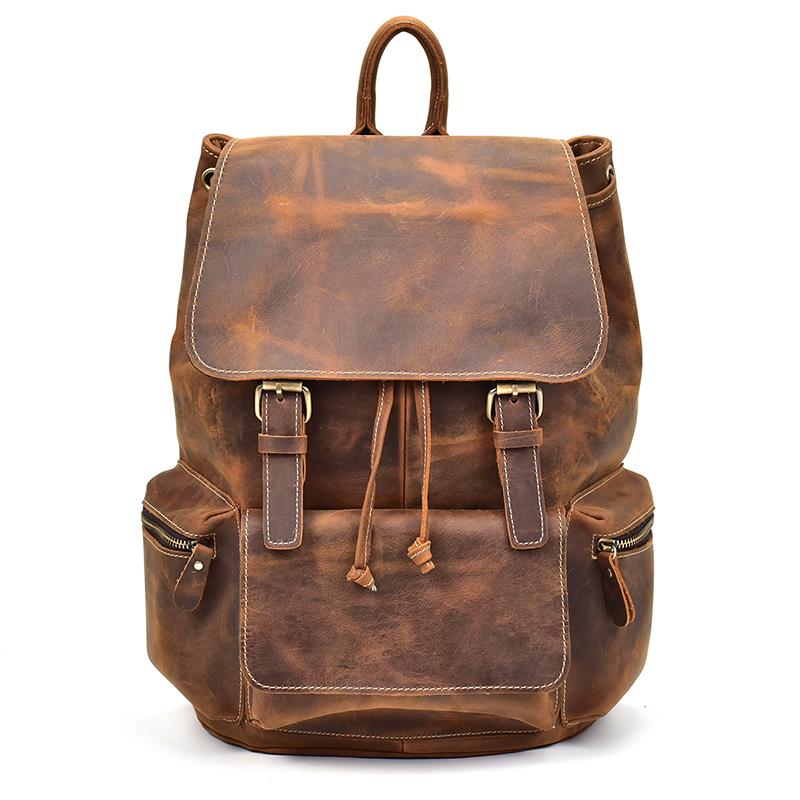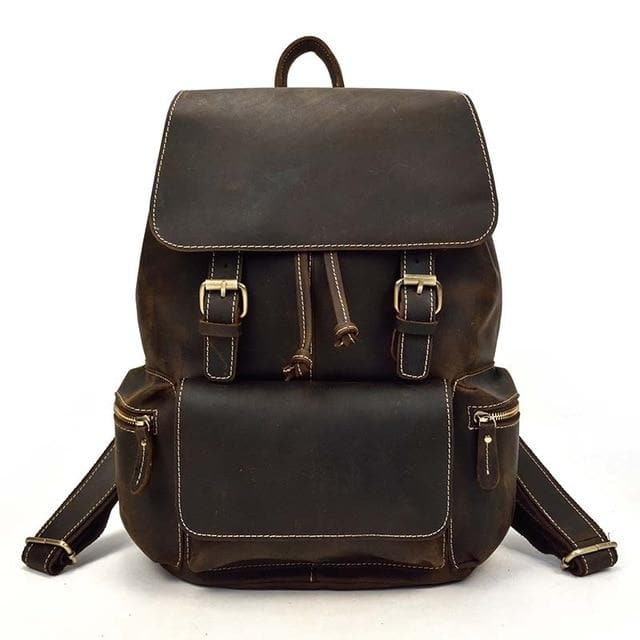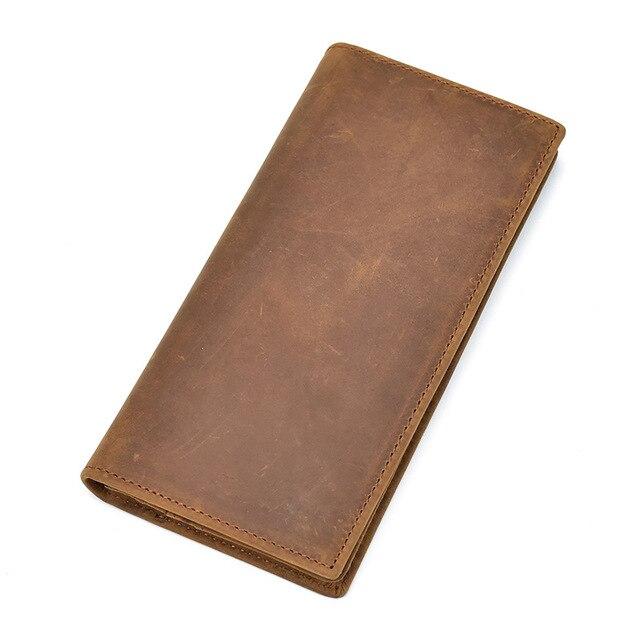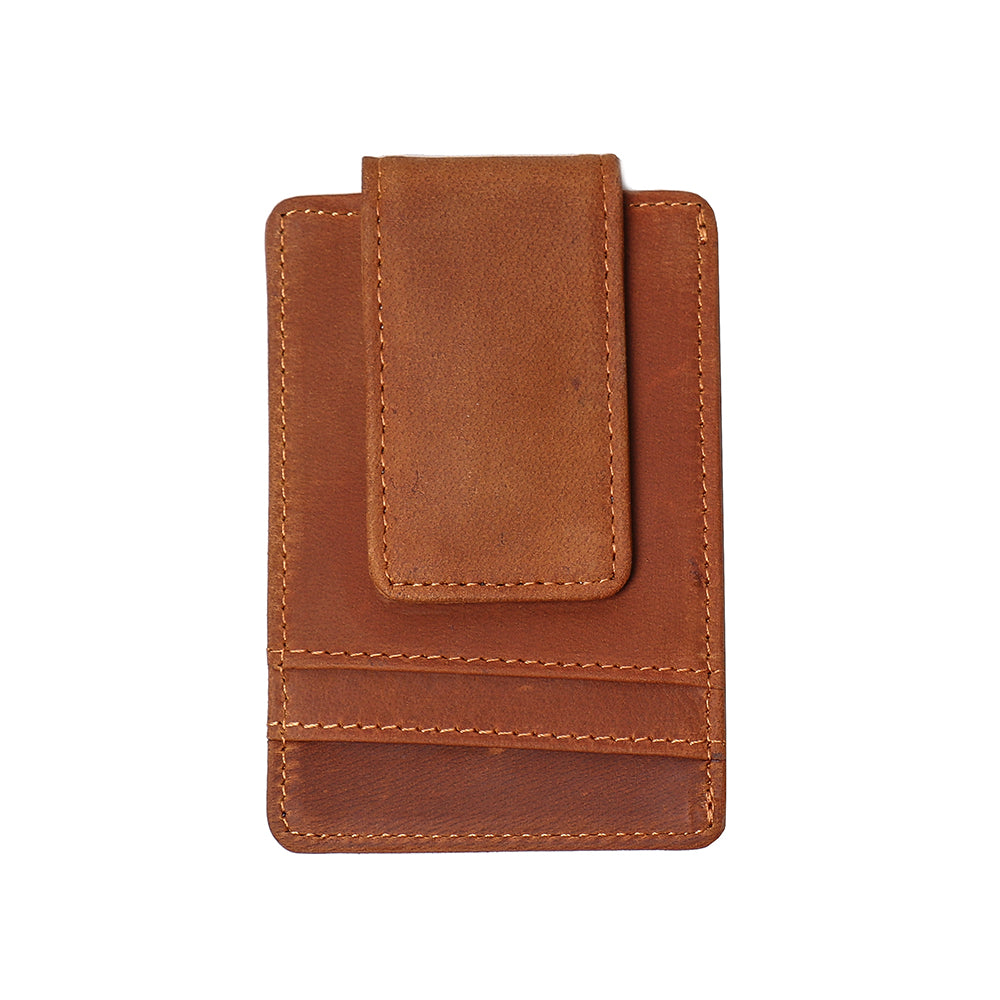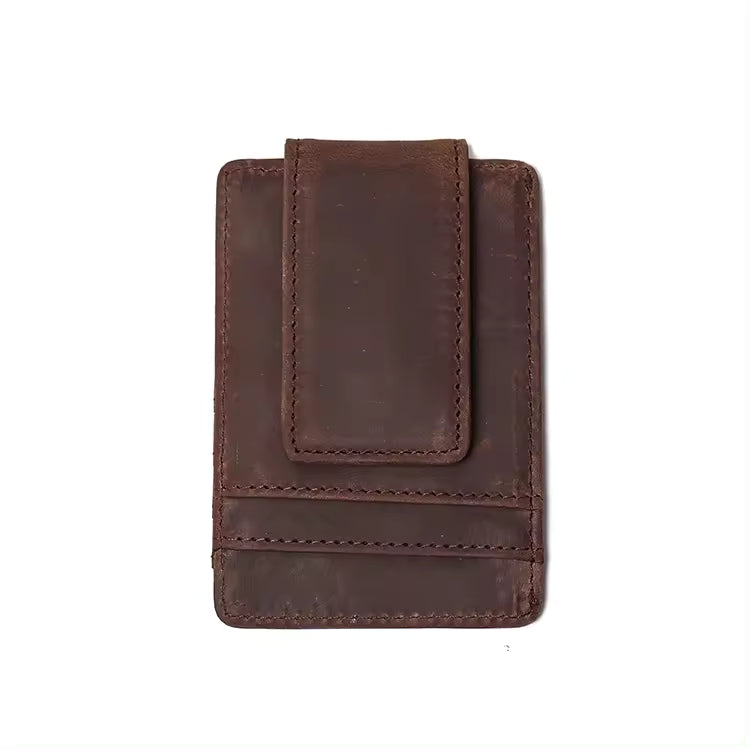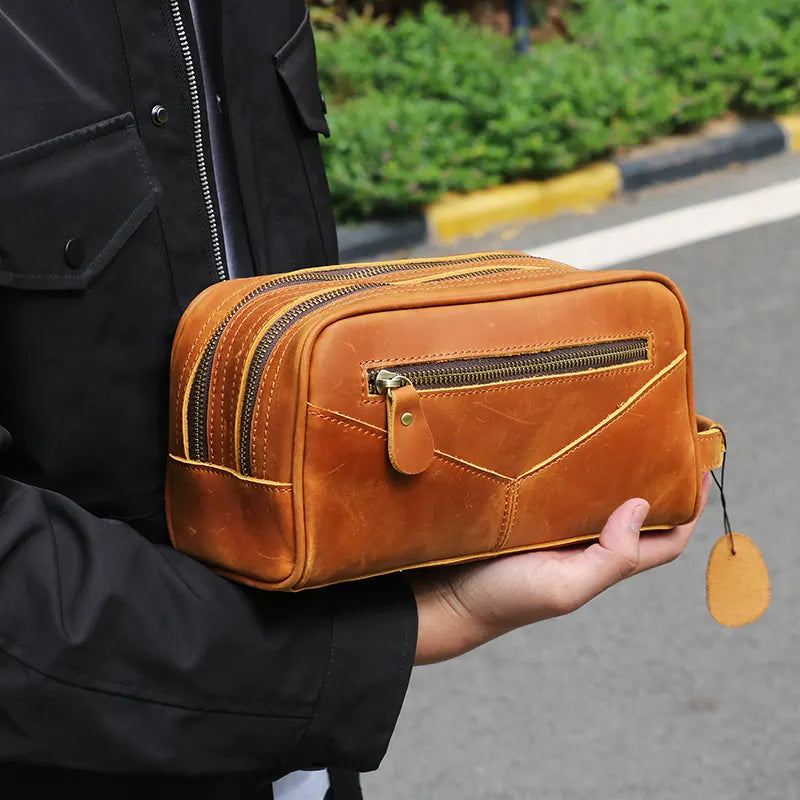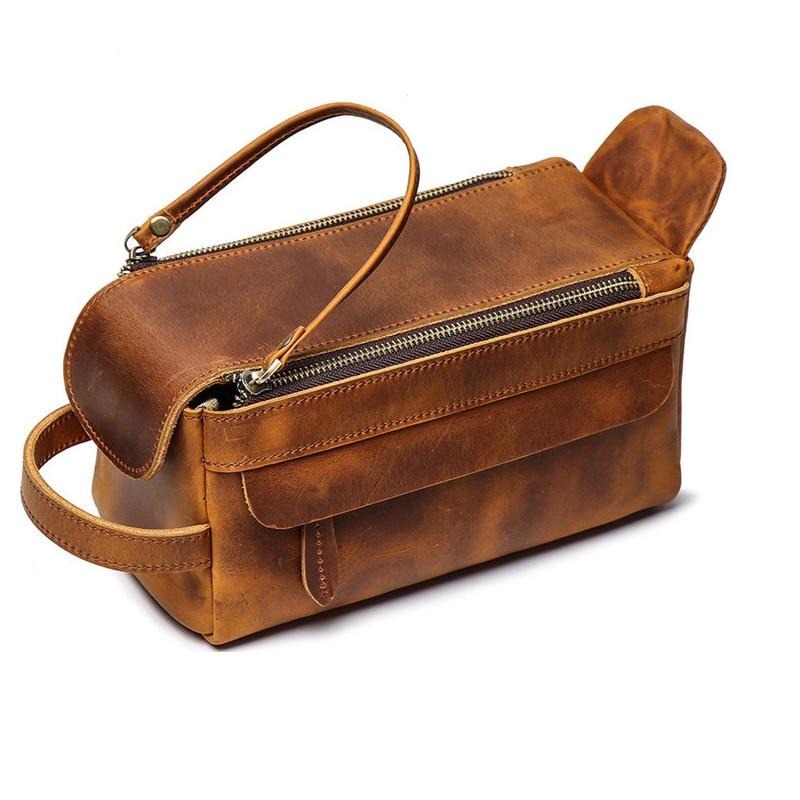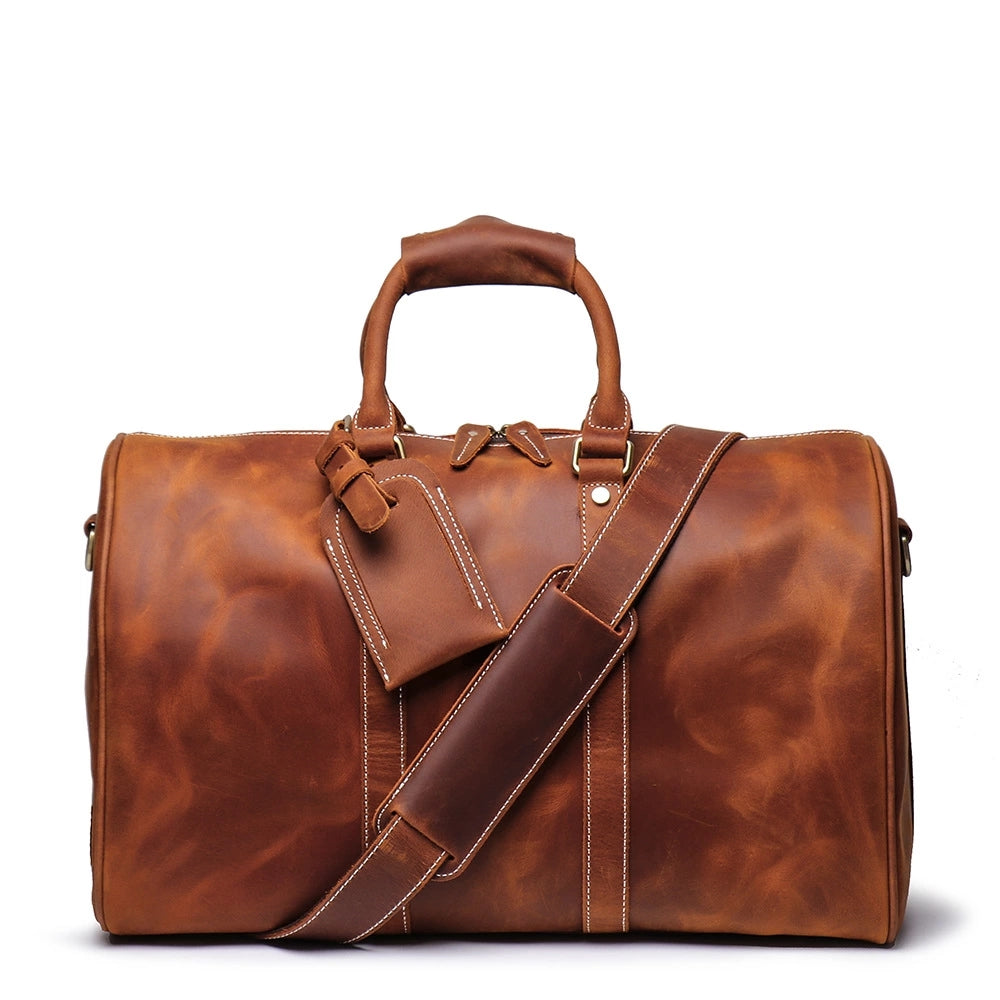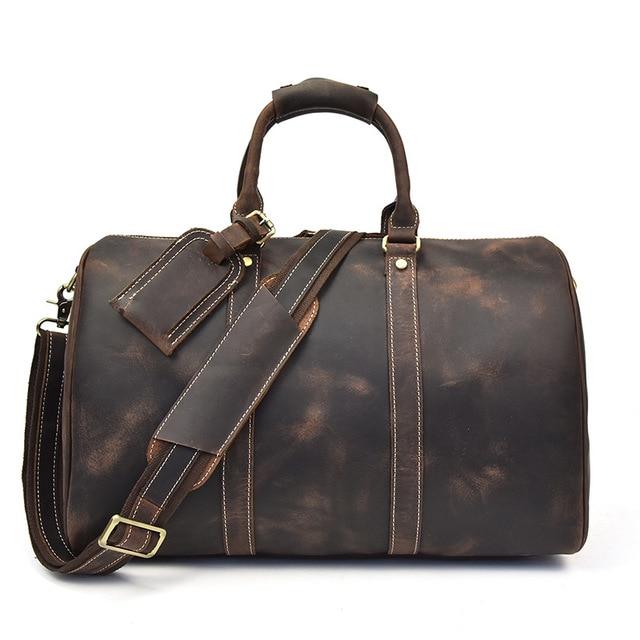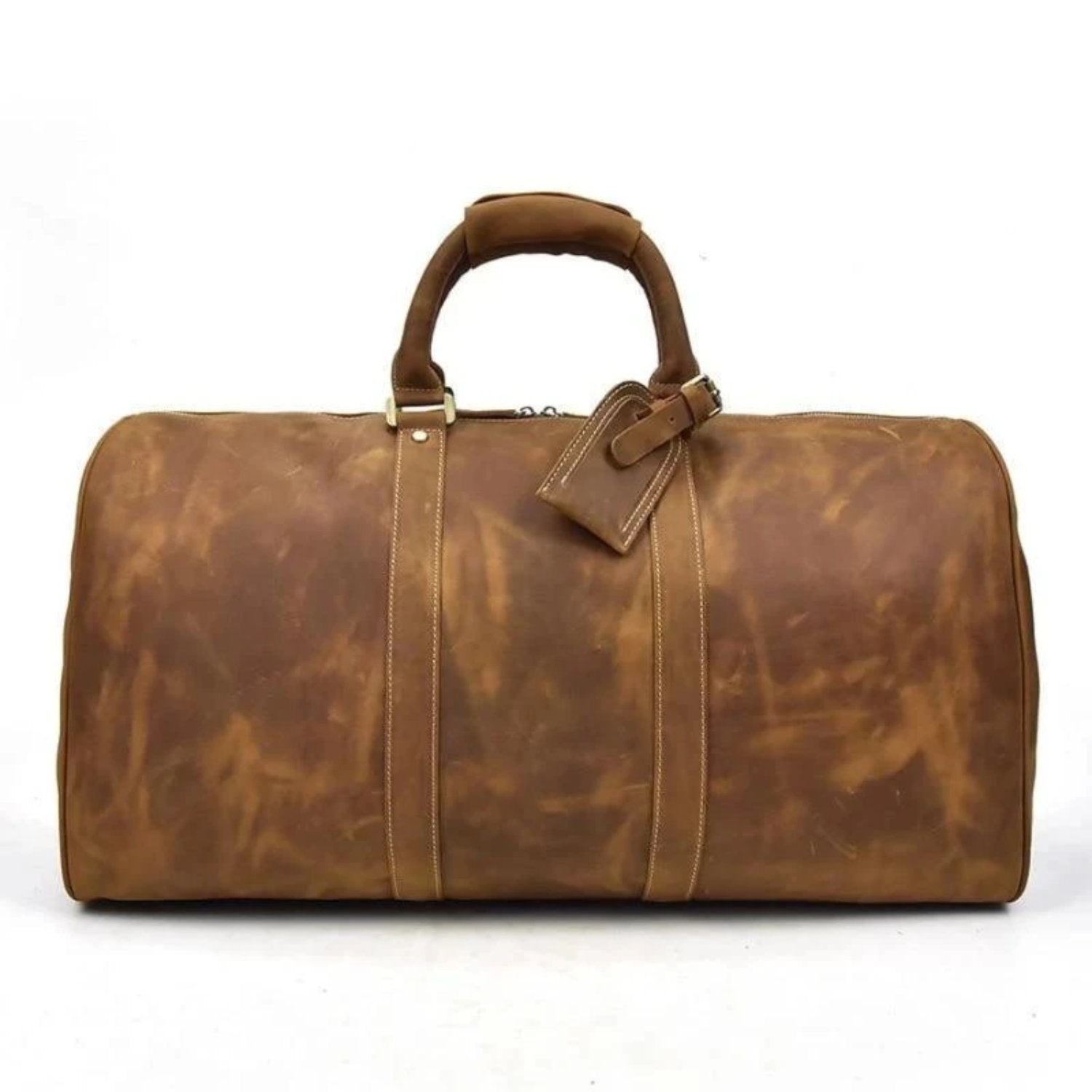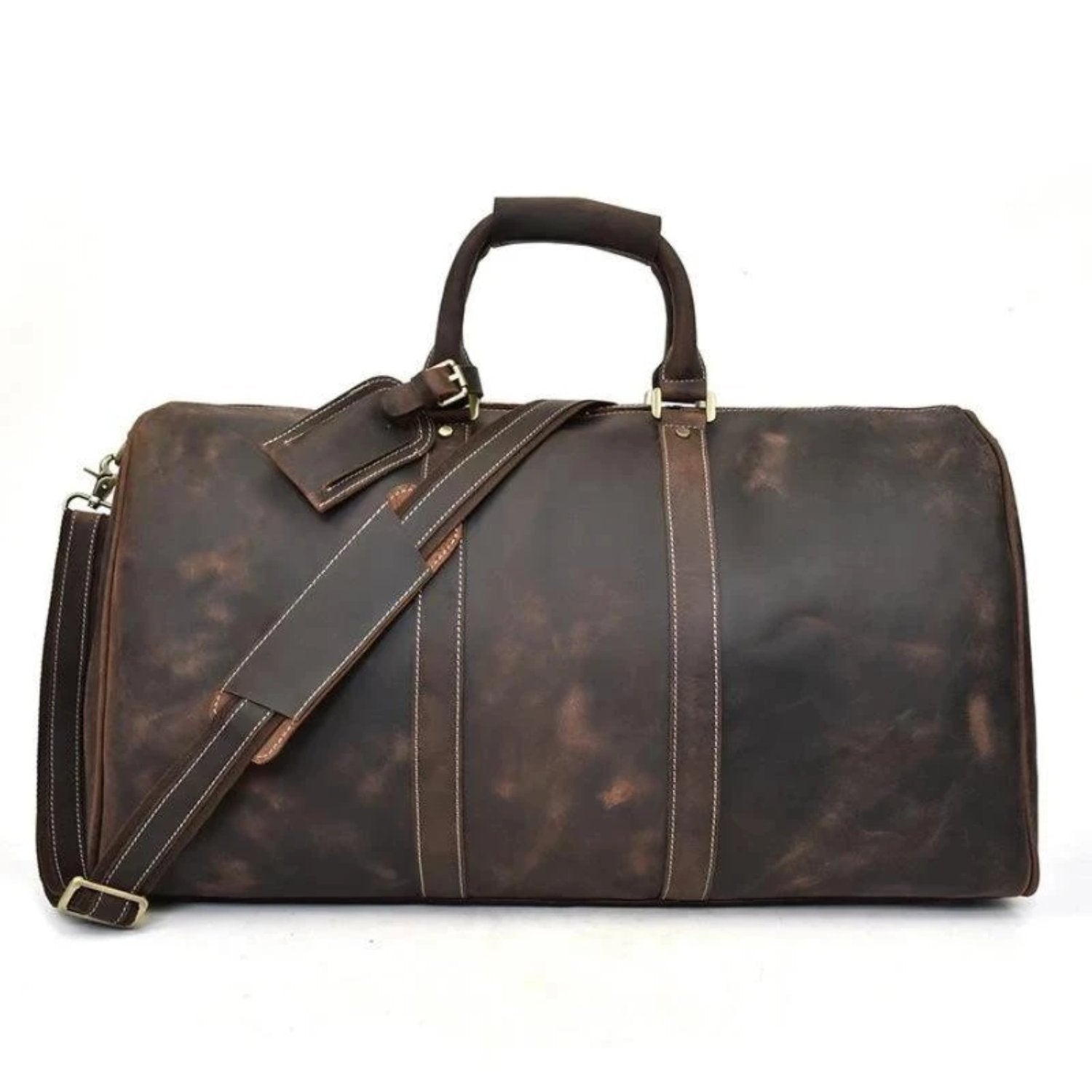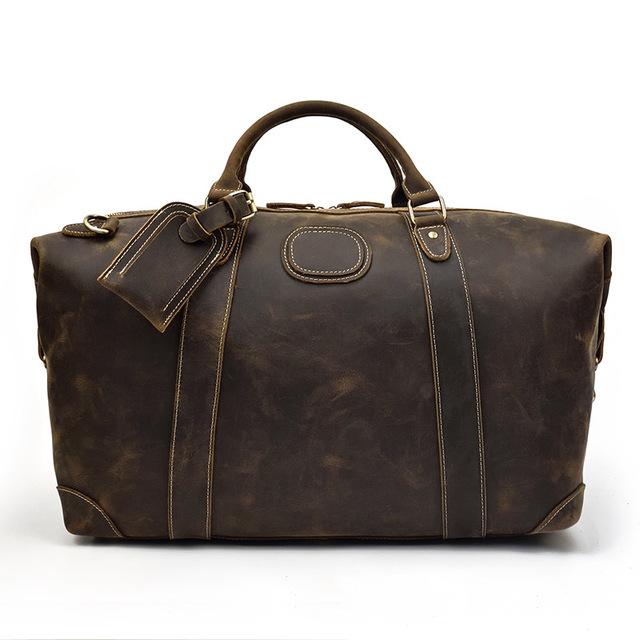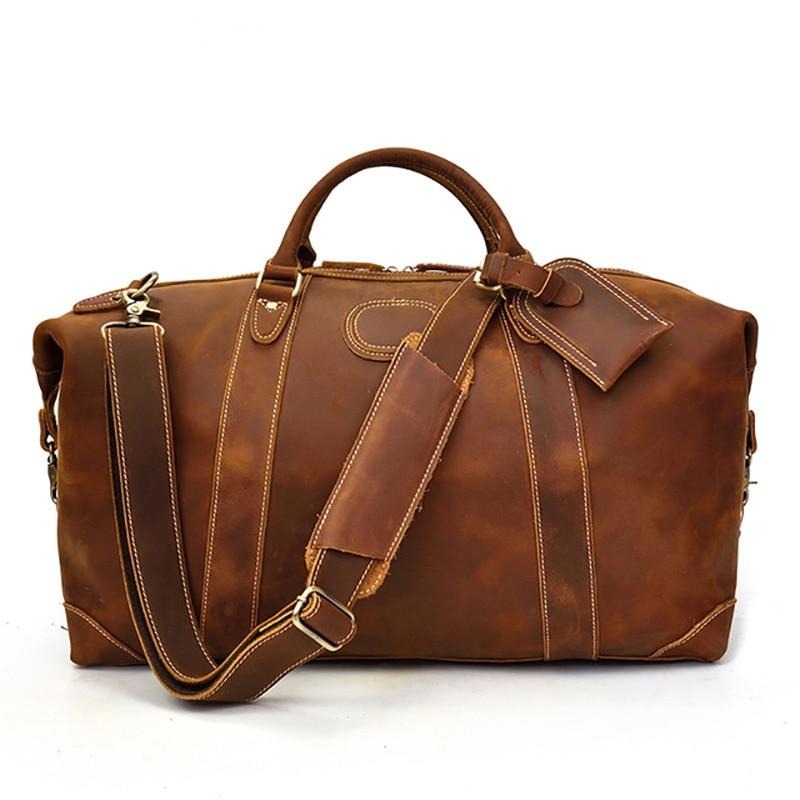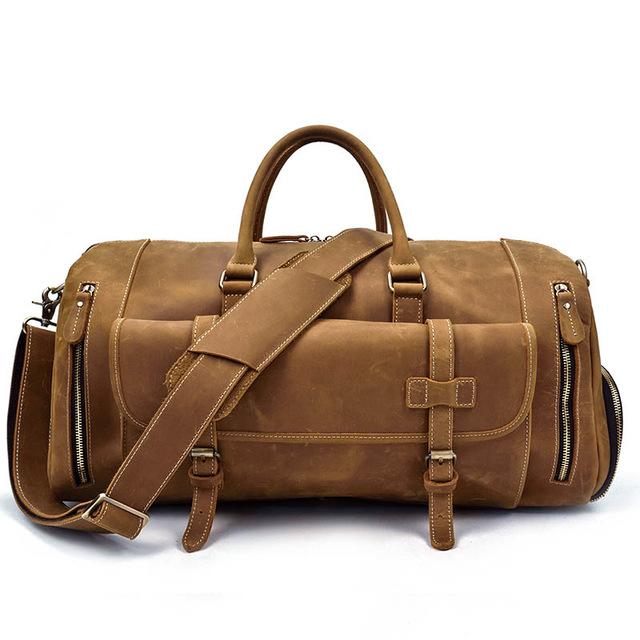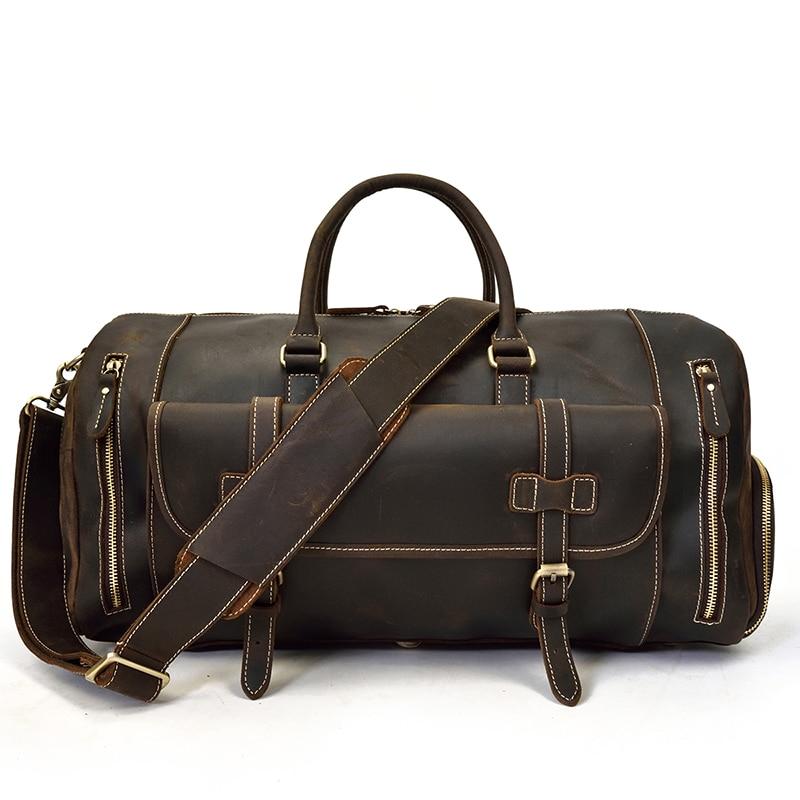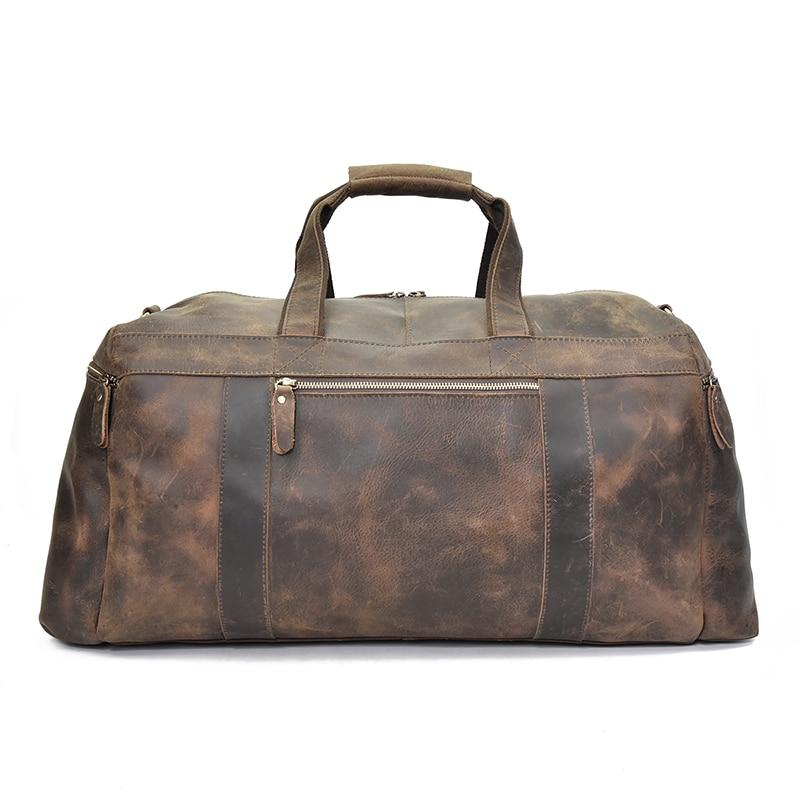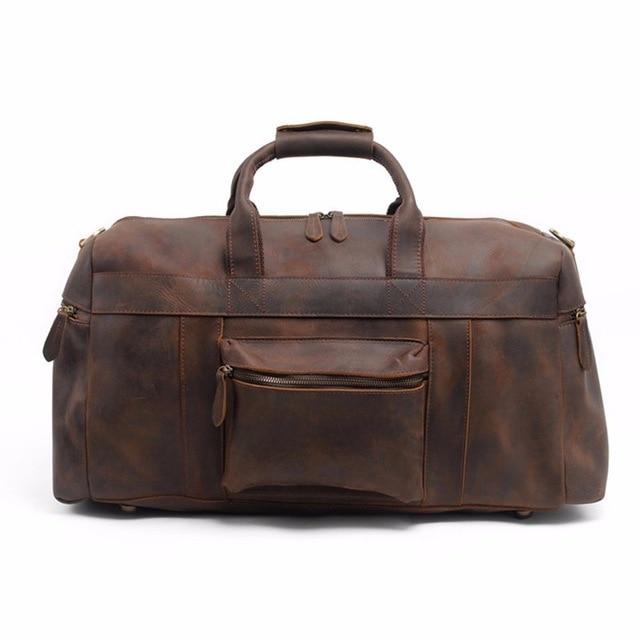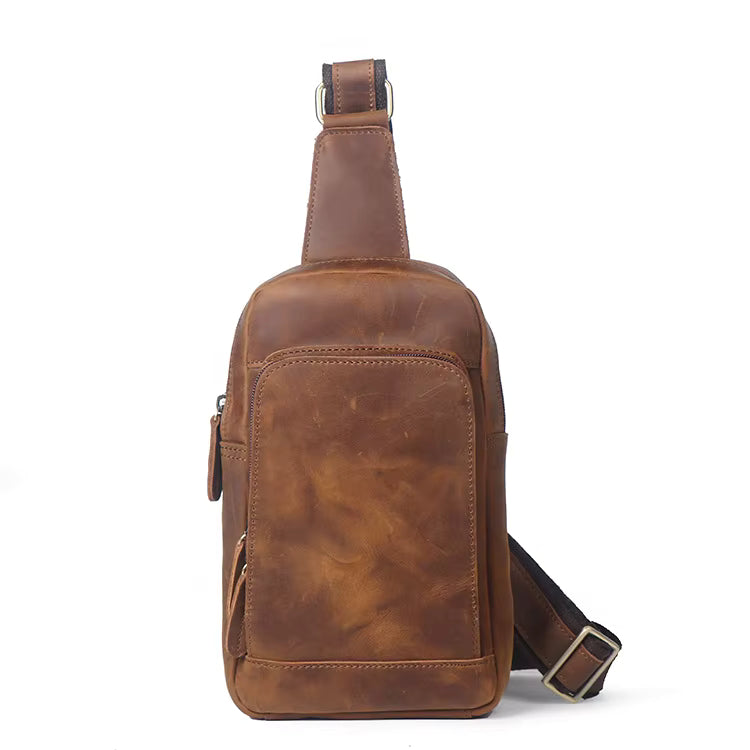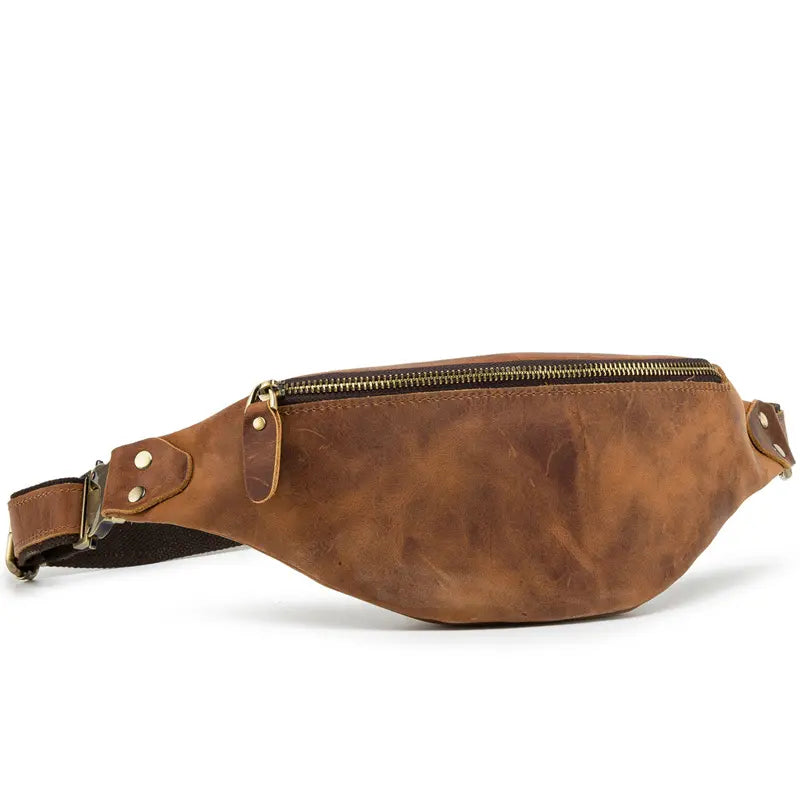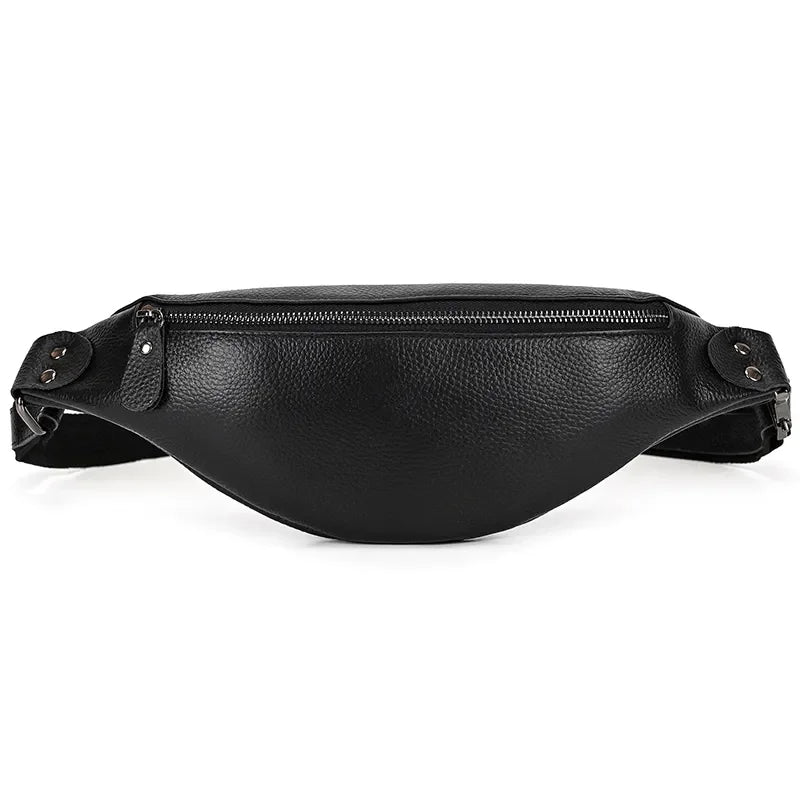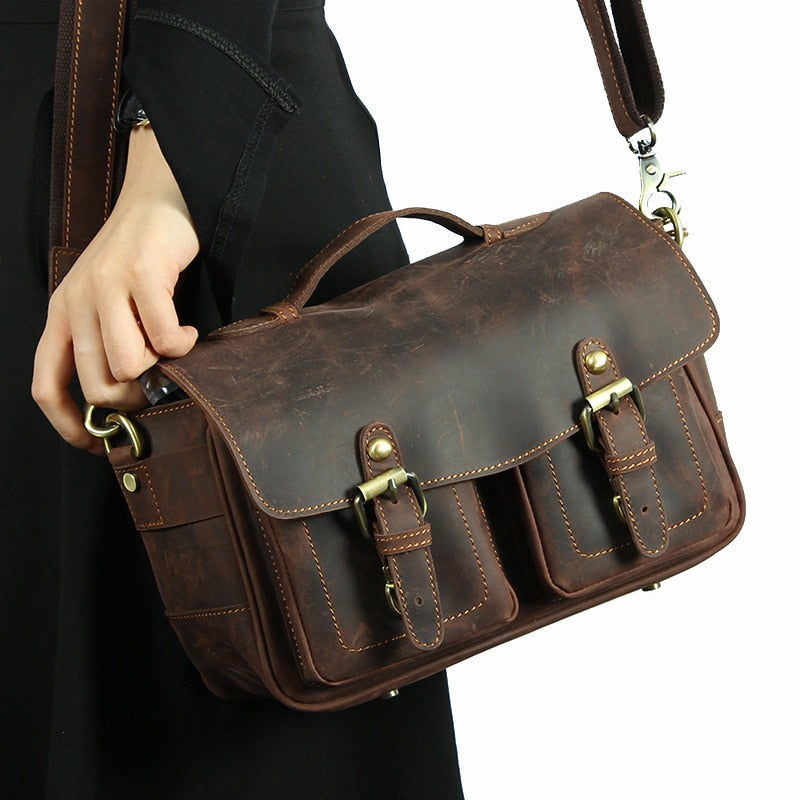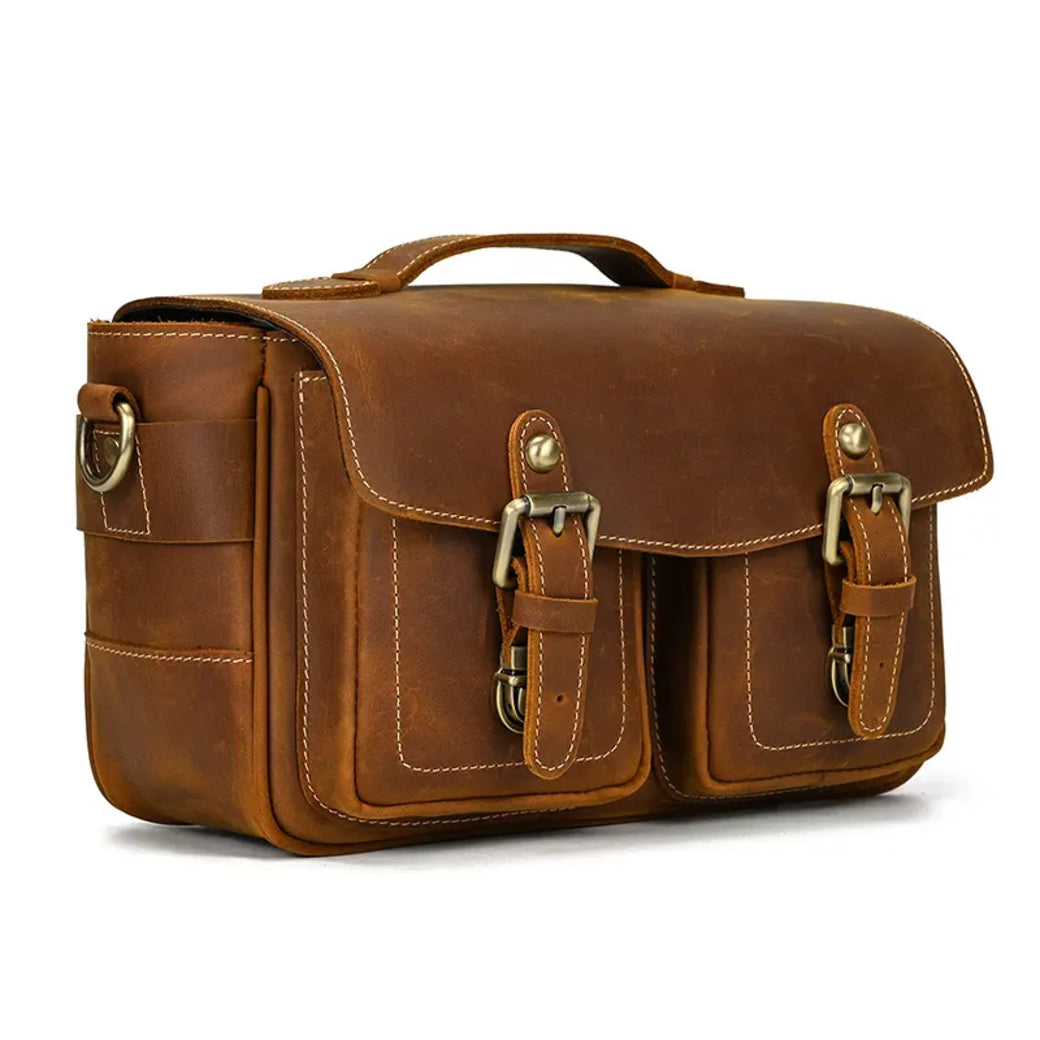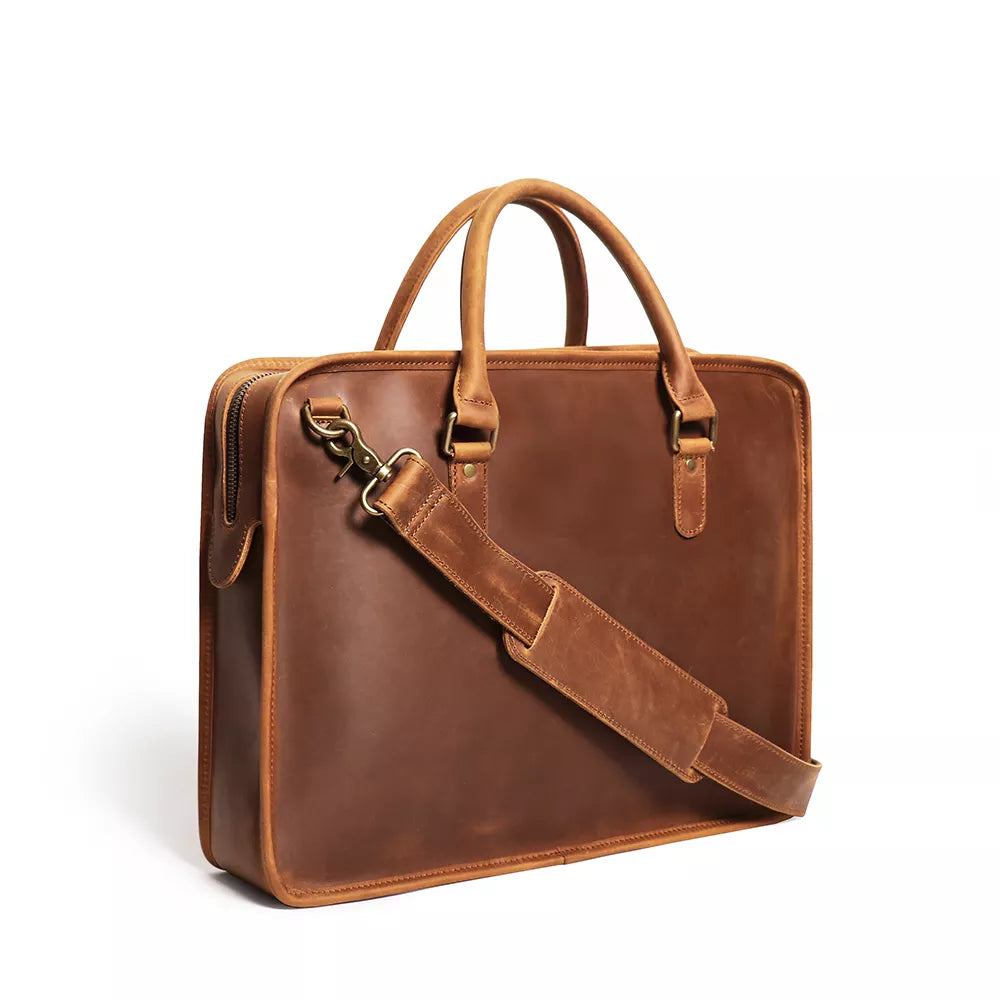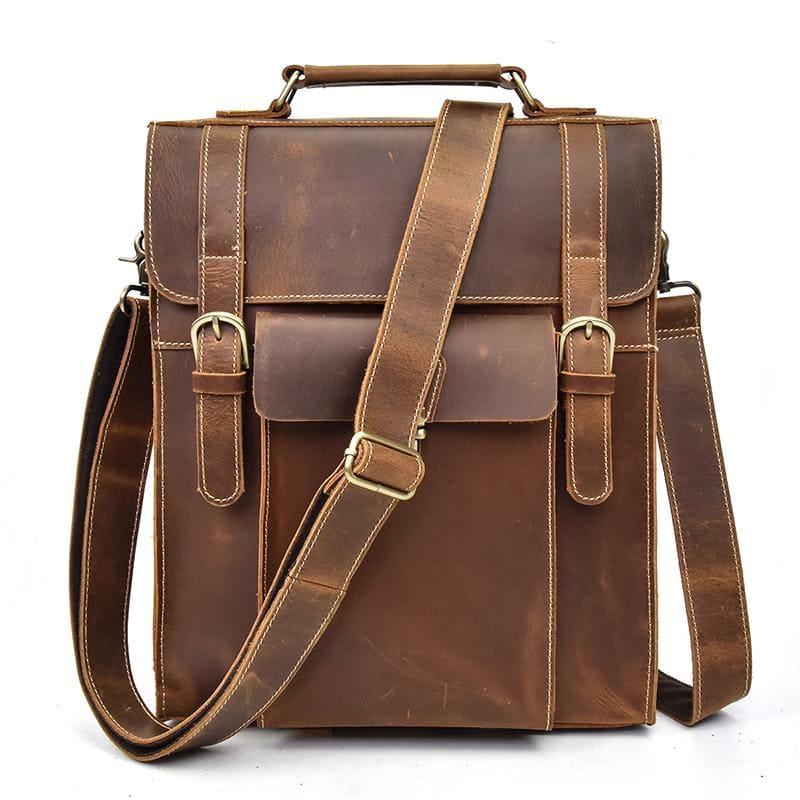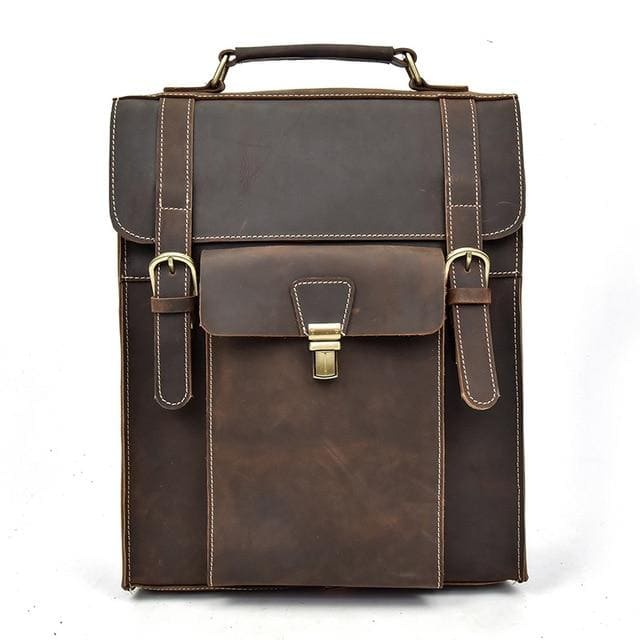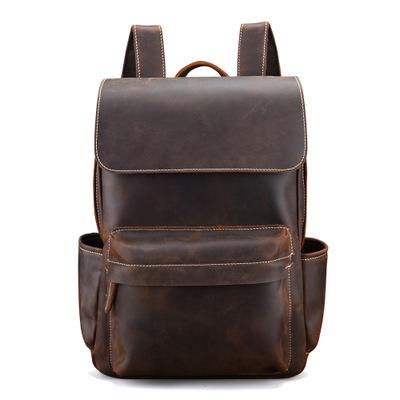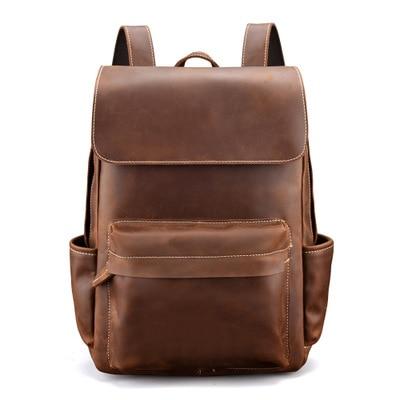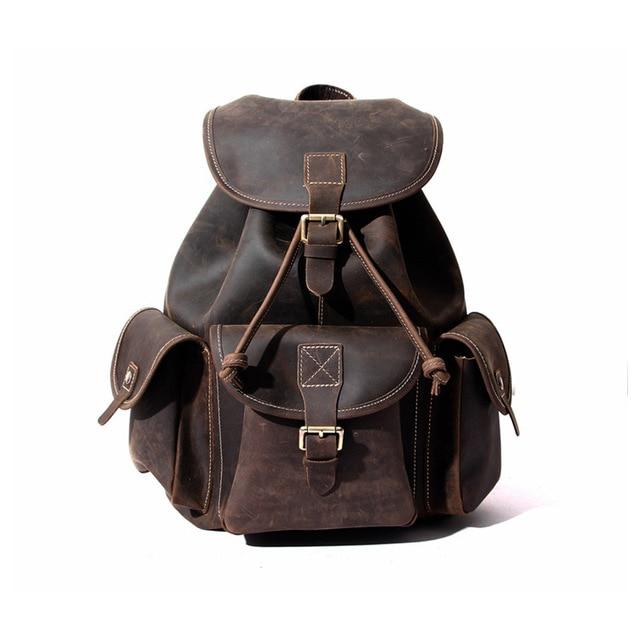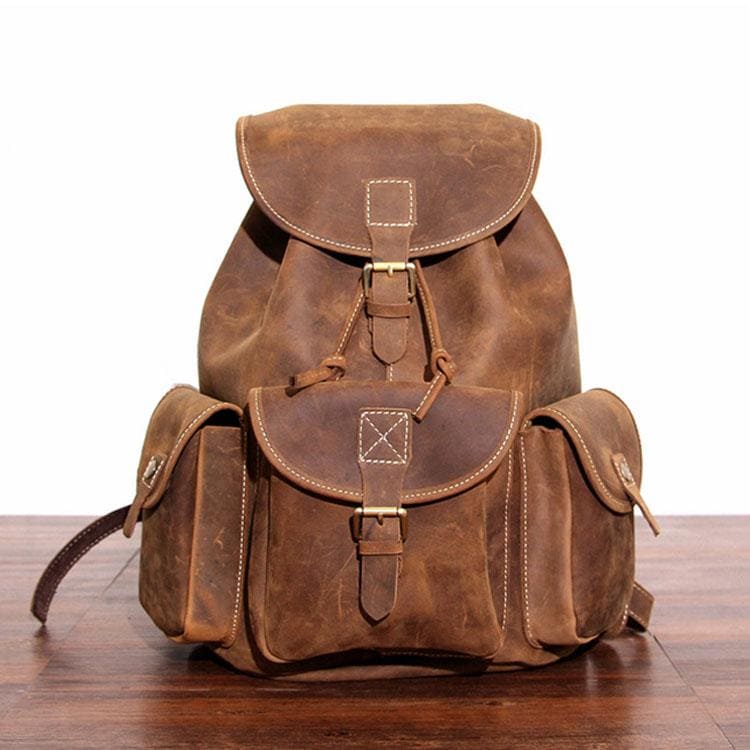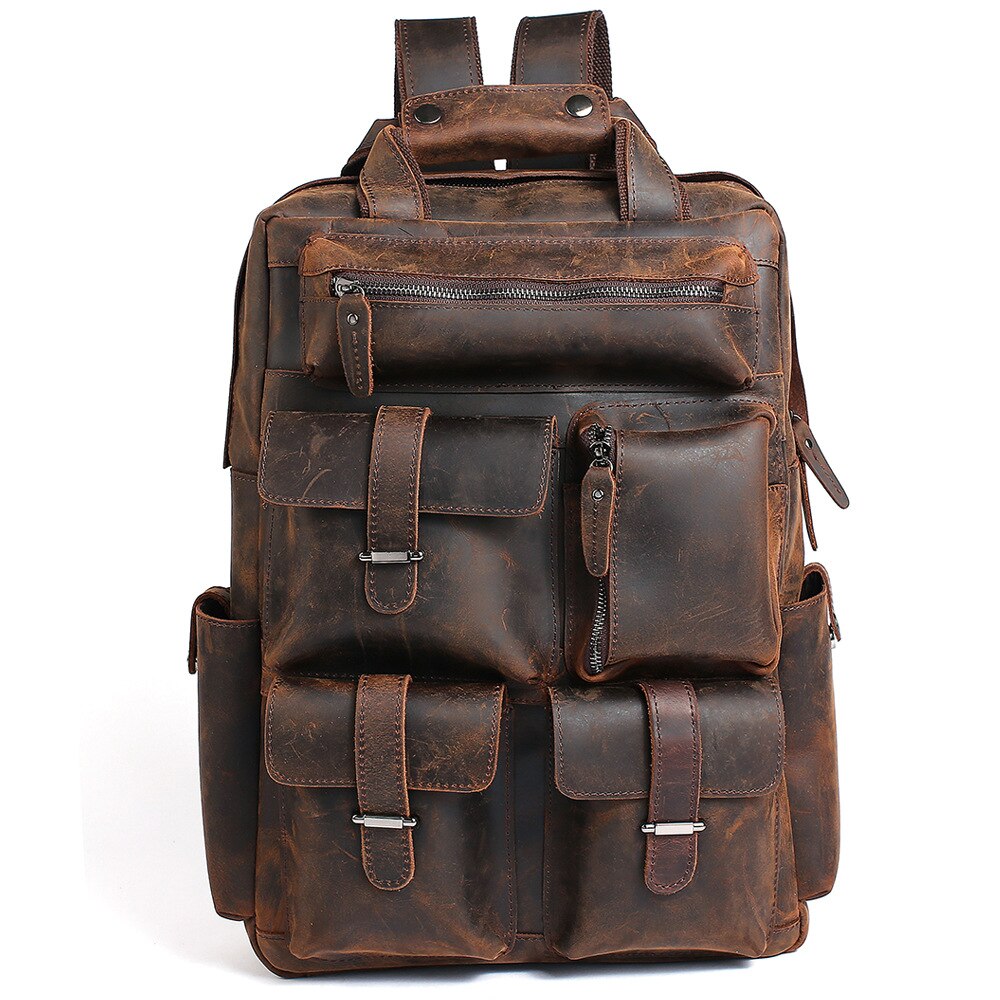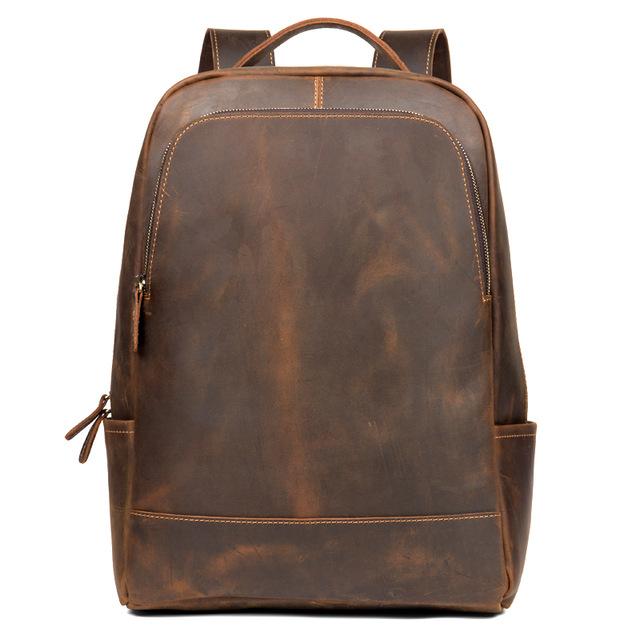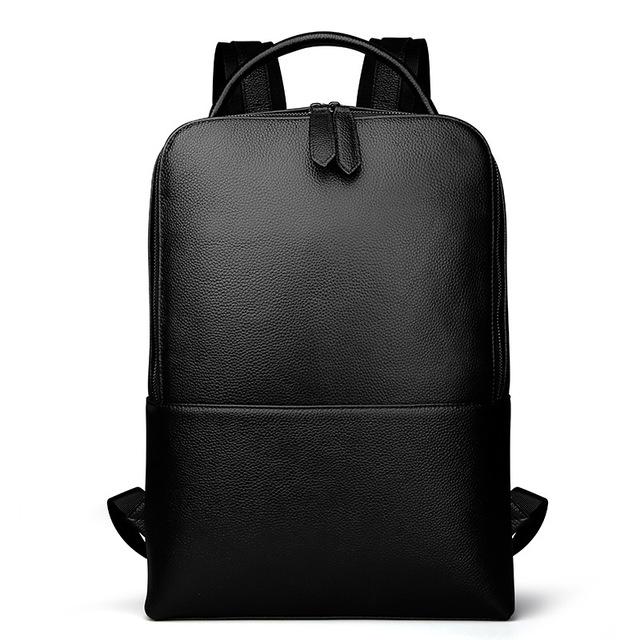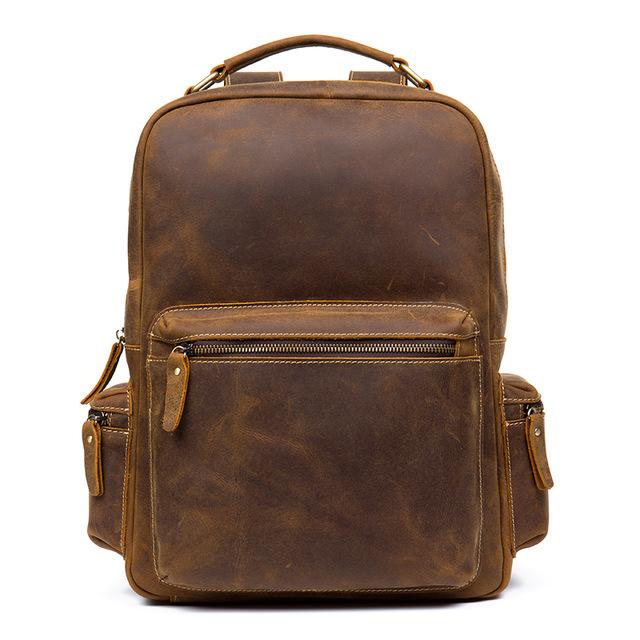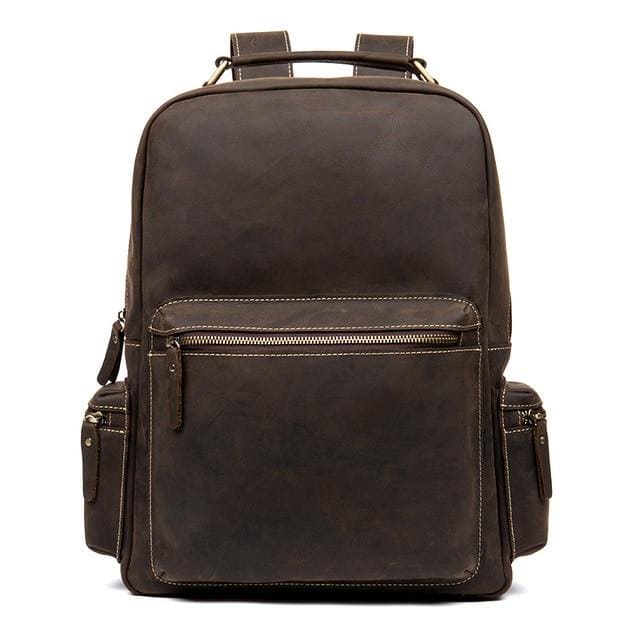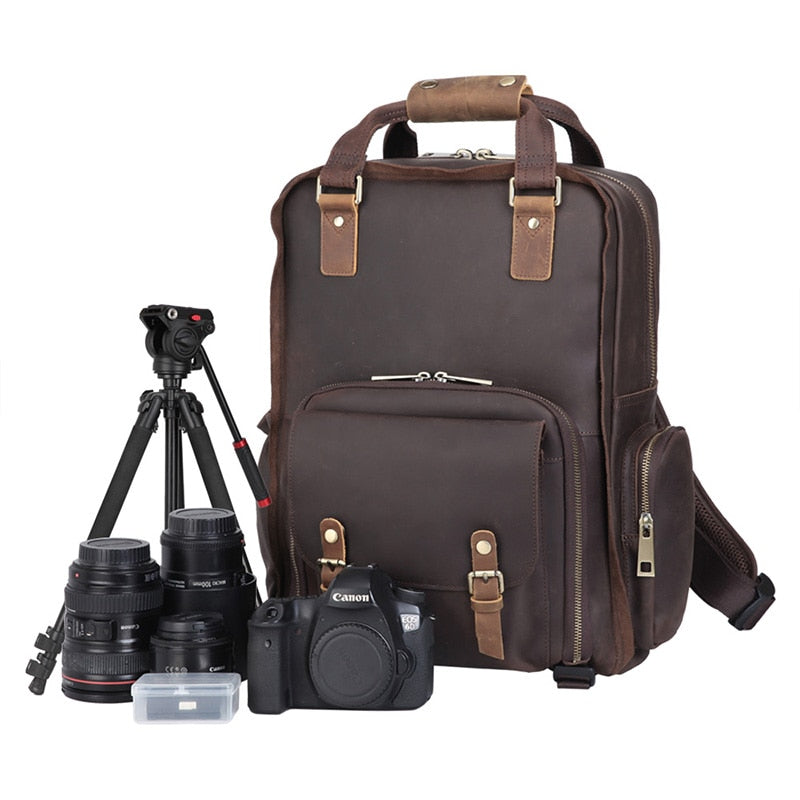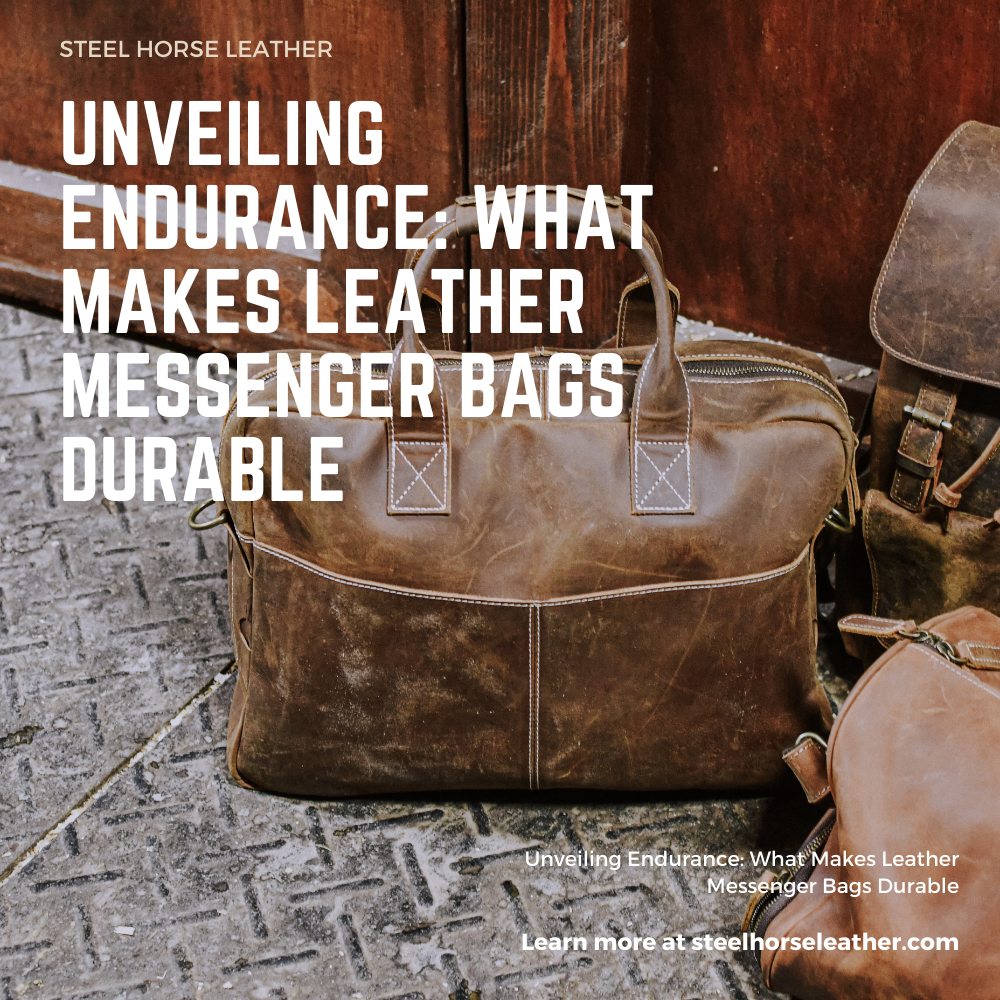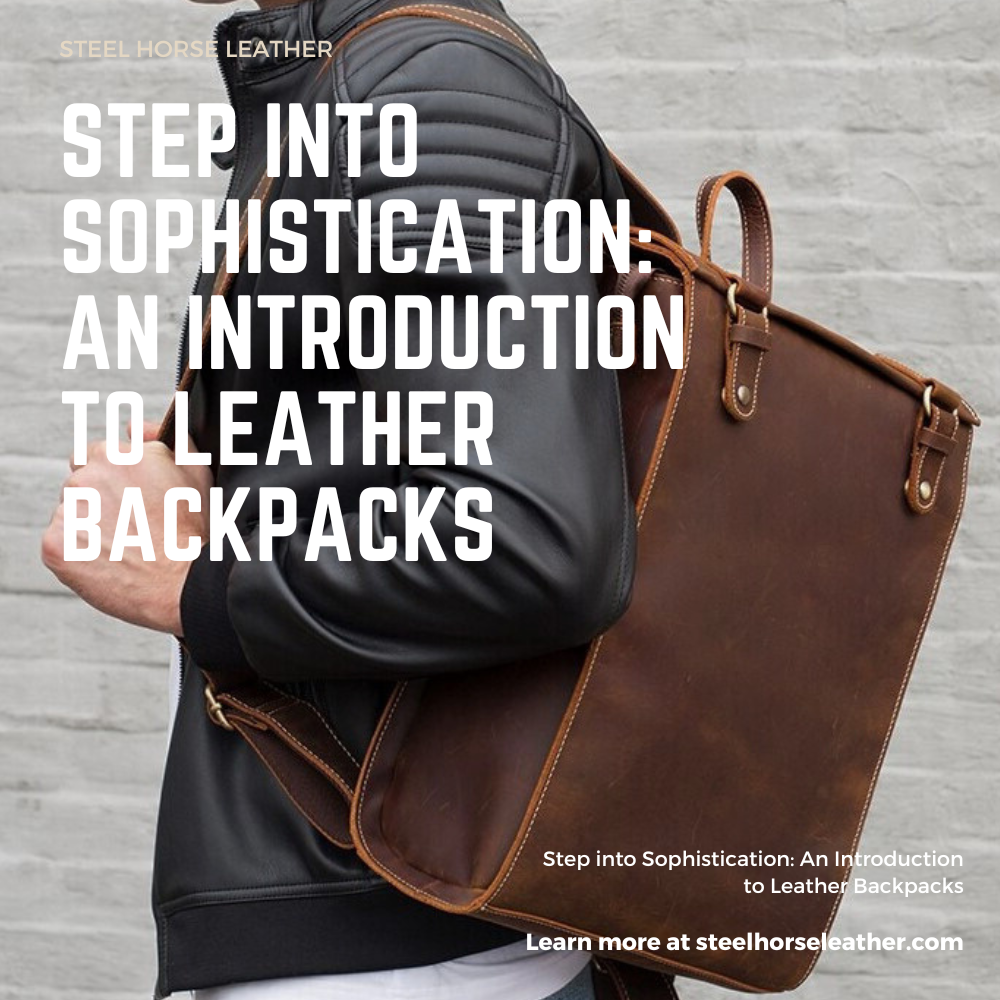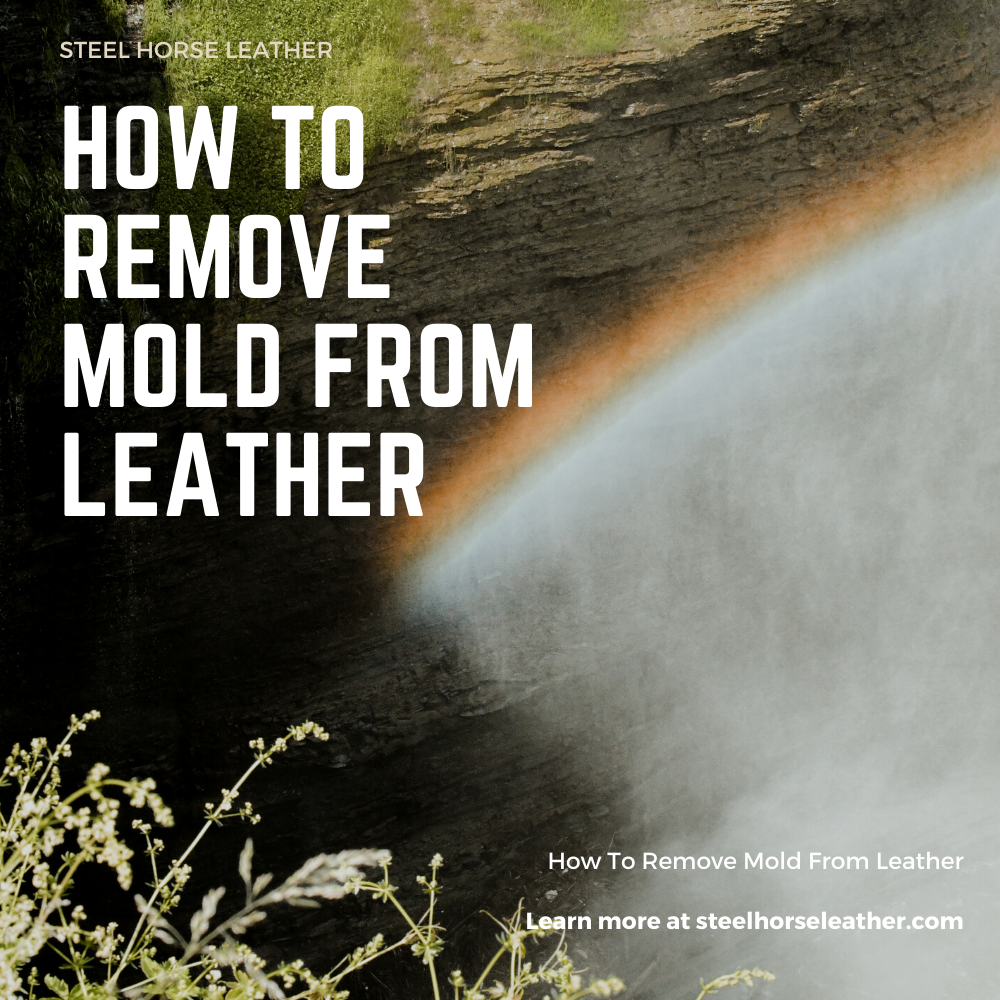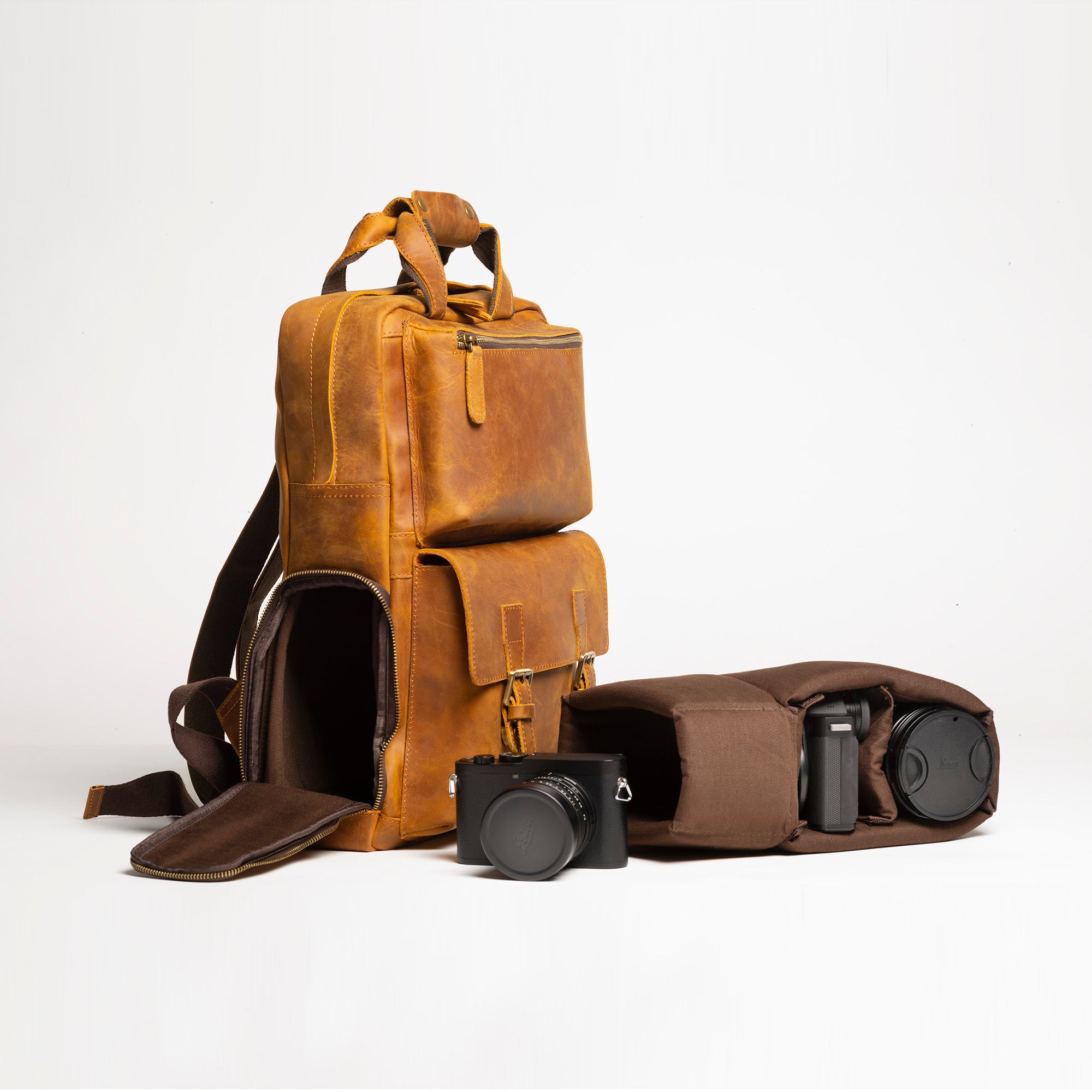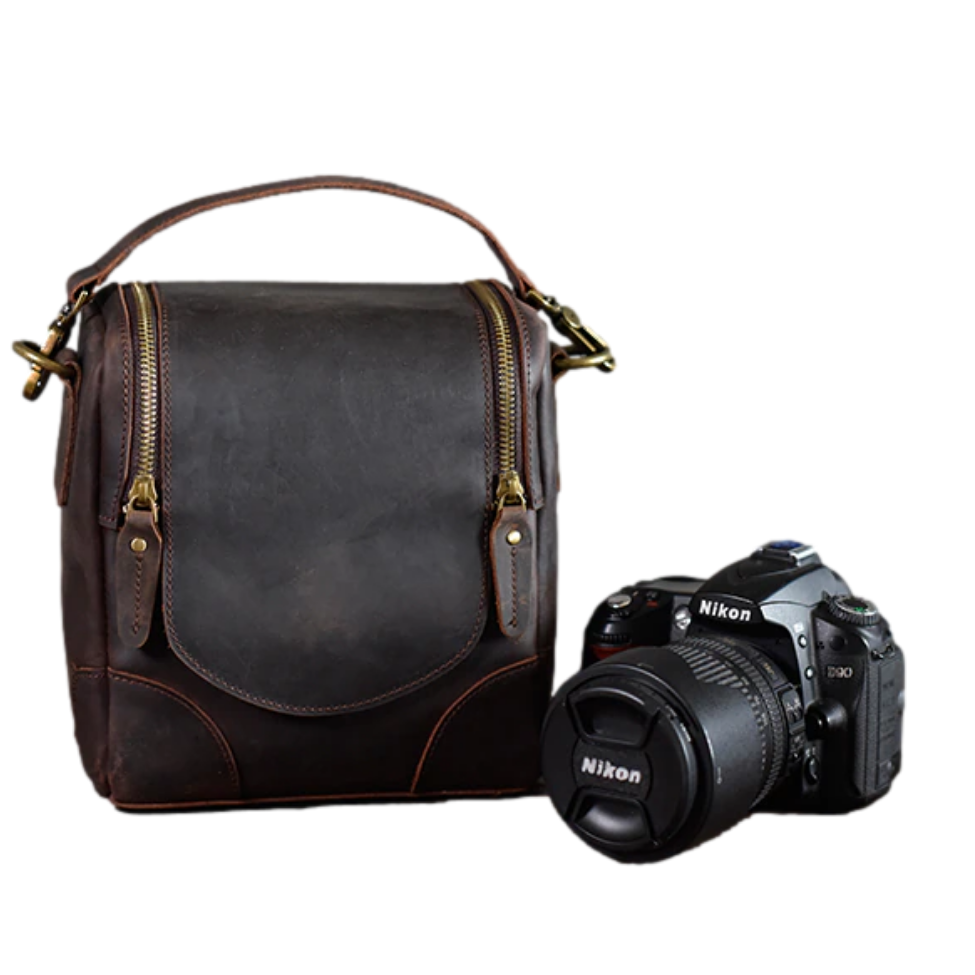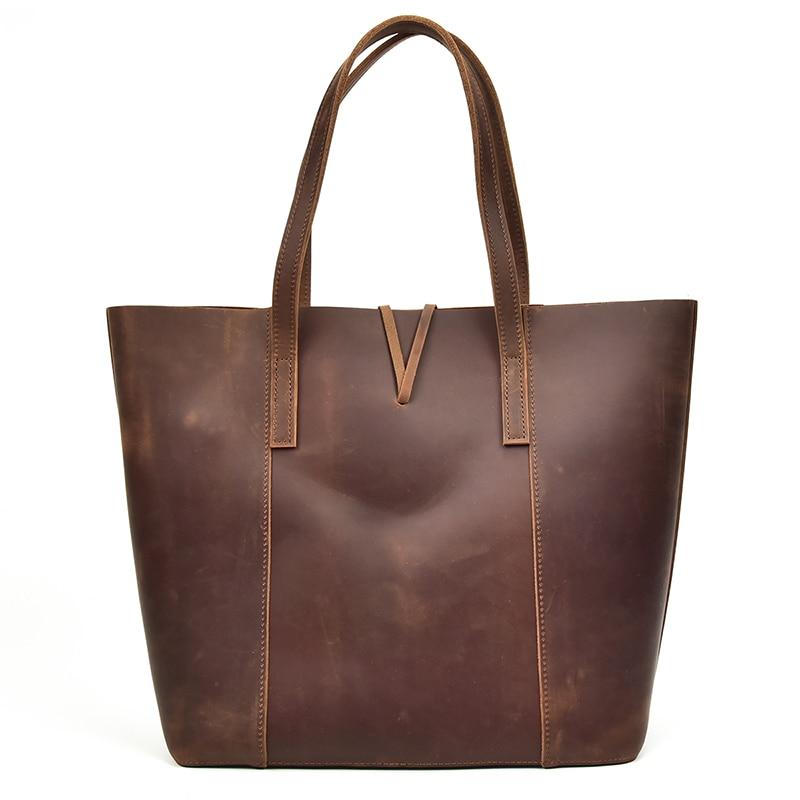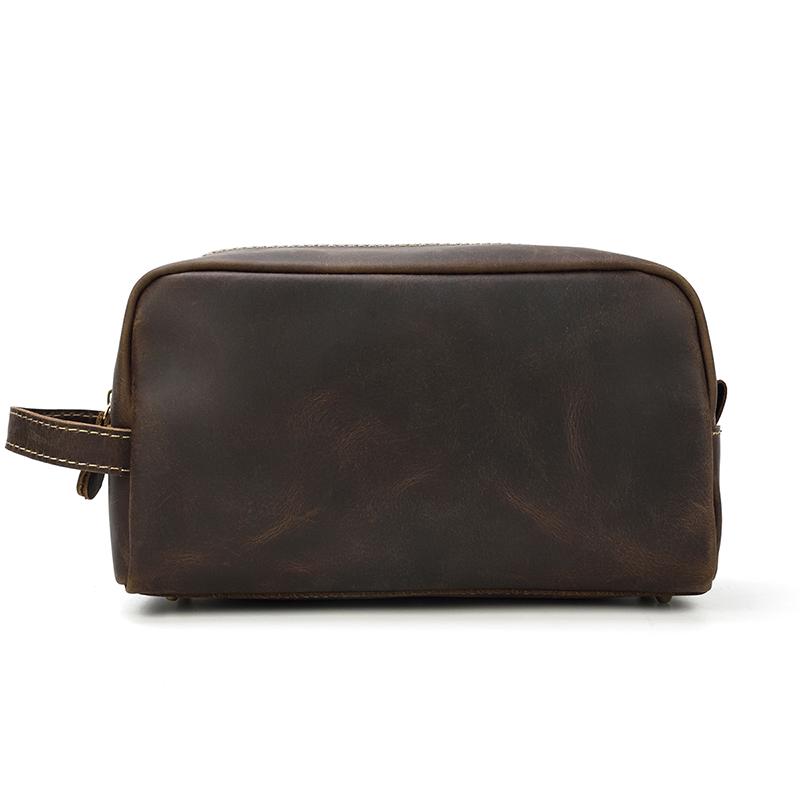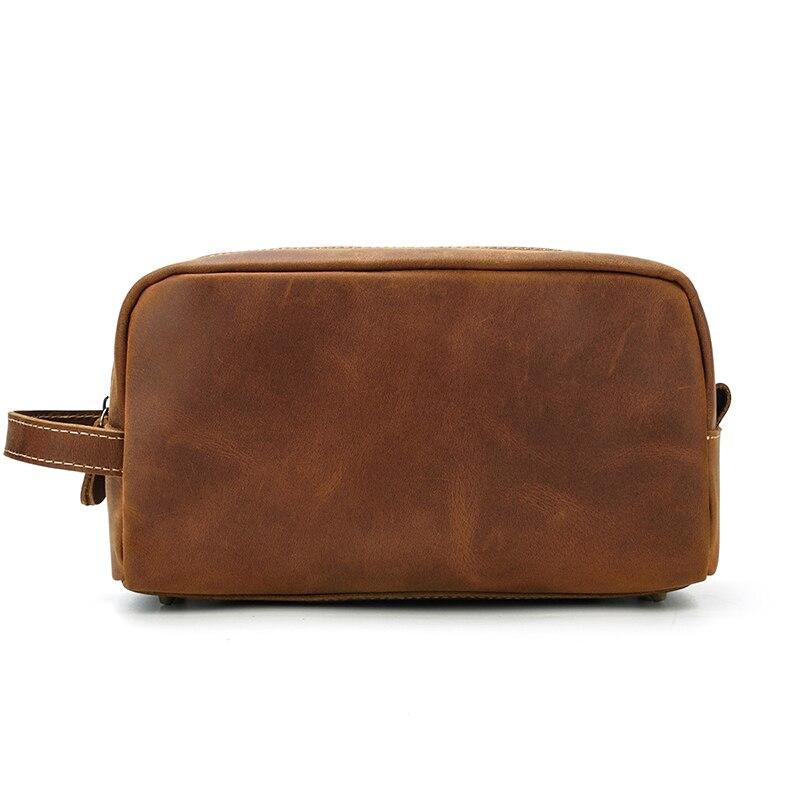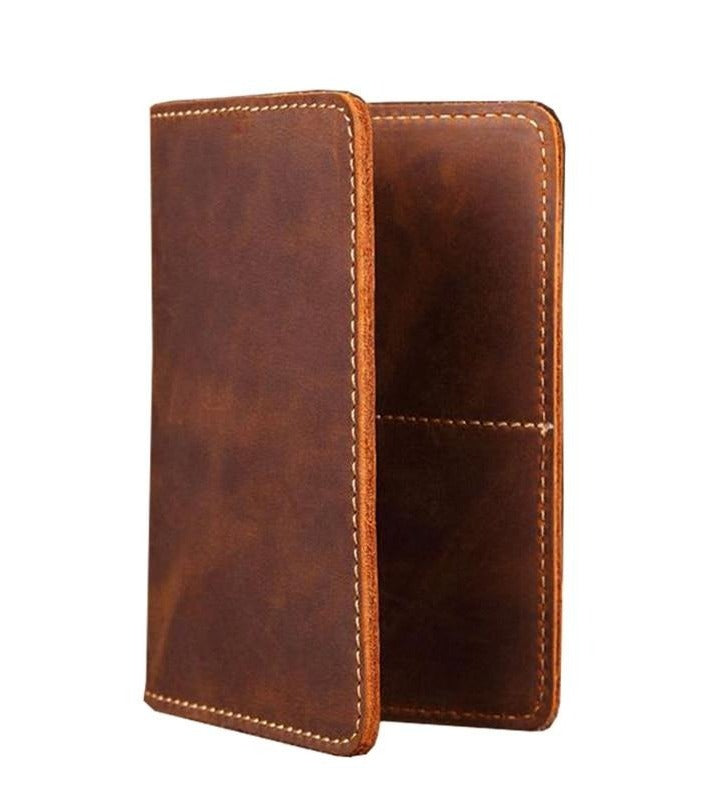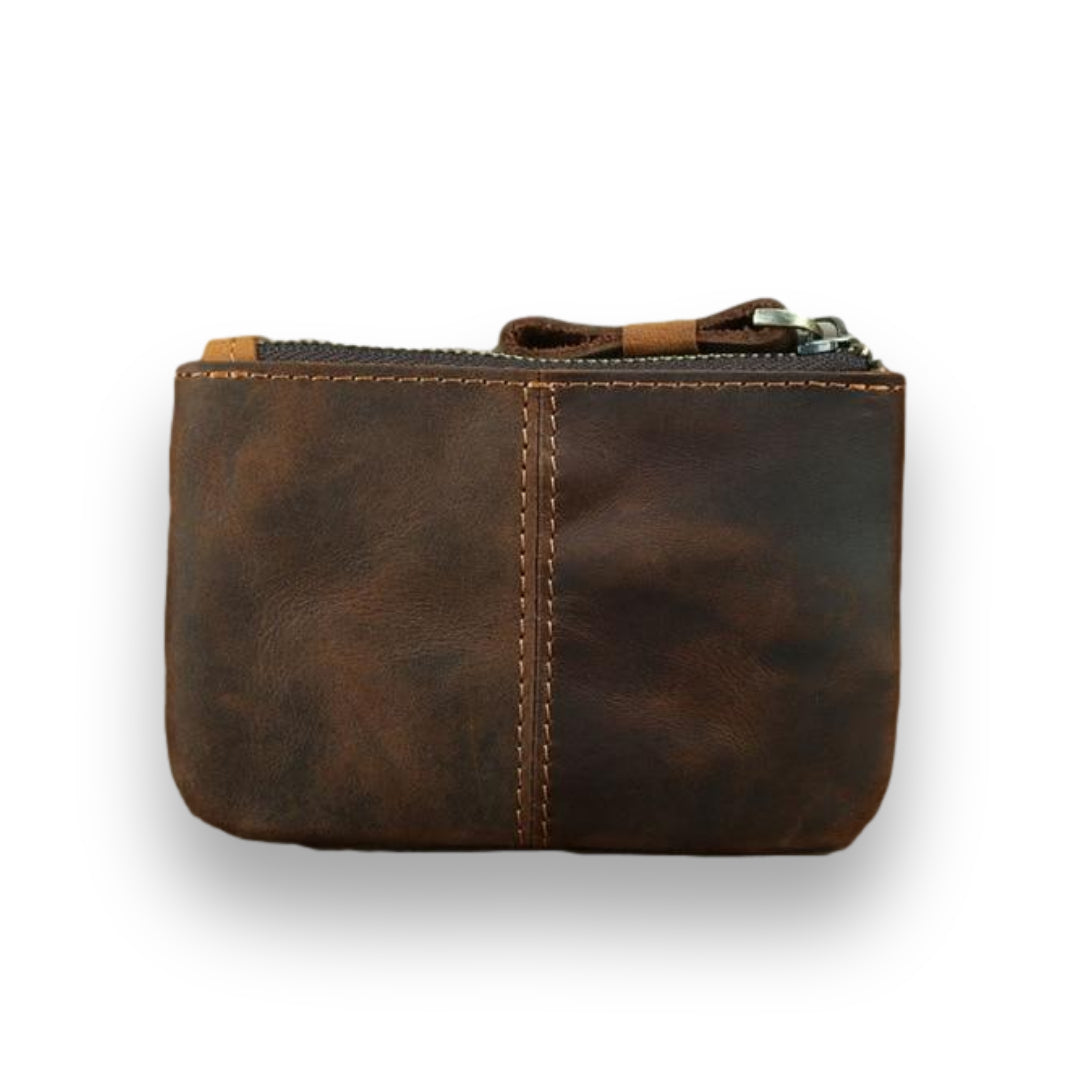
When you acquire a leather bag or case from Steel Horse Leather, in five years we want you to be as satisfied with your new case or case. This guidance on how to preserve leather bags is therefore here to help with that. Leather is a natural fiber since it's not manufactured by people. Since it is organic, it needs sometimes attention and conditioning to keep it appear good throughout the years.
You need to take care of your lovely leather bag, and remember to treat it properly so that he will be with you for many years. A periodic maintenance program helps to maintain your bag wonderful while avoiding certain problems common to all leather products.
Since leather is a natural substance, anything produced of it will age with time, including your new bag. Leather products must be cared for in order to preserve them as high as our skin over years. Even if they are looking after, the look and feel of the leather in ages frequently make the bag even more desirable. There is no way to stop them from aging.
The look and feel of the aging process is called patina and adds individuality and character to your bag. The leather is very loved. Some attempt to mimic the effect of dyes and treatments, but it is never so beautiful as the beauty generated by leather age, by the natural aging of everyday wear and tear. With every single marking scratch and crack, your bag tells its own life story.
Men are drawn nearly universally to leather items. Wallets, boots, purses, coats, gloves – all have some added appeal when made from the tough hide of an animal.
It is not difficult to grasp the reasons for the attractiveness of leather. It is a material utilized by our forefathers in clothing, sackcloths, and a number of other goods. And leather is so long-lasting that many of these products still exist today (in fact, a pair of shockingly well-preserved 5,500-year-old leather shoes were discovered a few years back). To this physical hardness is added an air of hunting and slaughter that has been borne of the material. Moreover, the leather looks absolutely fine.
We must remember that leather is skin, yet it is difficult as nail polish. It may dry, crack, discolor, distort, and so forth. Today, then, I'm going to take advantage of the different treatments and leather treatments so that any shape may be transferred to your family.
Note that most of the following advice on how to preserve leather bags applies mainly to goods constantly exposed to ordinary usages, like shoes, coats, bags. With these techniques you still can look after wallets, accessories, etc., they usually need little upkeep.
What Do You Want Your Leather to Look Like?
When you decide how to preserve leather bags, it is your first duty to ask what you want and what function your leather plays. A couple of robust work boots need less maintenance than a couple of sleek dress shoes. Naturally, a motorcycle jacket will get struck more than a bomb jacket you wear about the city — this is the nature of riding a motorbike on your motorway using leather.
It's also flavorful. Some people prefer to seek a clean, polished bag, while others are fine, wearing, and fine-tuned. Others like to treat their personal luggage lightly and leave them to have a battled-to-hell look that conveys stories of adventure without saying a word at any moment.
Think about the appearance of your leather, and then we're going to see a few different treatments.

The Differences Between Various Leather Treatments - How to preserve leather bags
If you care about how to preserve your leather bags the same way we do, you may have assumed that it was all that leather had to stand for a time, giving your shoes a nice shine. All the creams, polishes, waxes, and conditioners combined into one product in my imagination when I look at the shoe care area of a shop, actually, though, they are not completely interchangeable. Let's look at what the various leather therapies perform. Keep in mind that there are no universal advantages and disadvantages, as stated above, what you desire and what the leather item is.
Polish
In fact, Polish is mostly for esthetics. It is mostly about the real brilliance, rather than preserving it from elements, of the goods (typically shoes and bags). After all, many polishes contain a humidifying aspect so you really need to check the product description and user reviews to see what you're receiving and what you're doing.
Because cleaning is part of a proper routine of cleaning, it is definitely not harmful. The amount of polishing relies solely on your personal preferences, although most casual articles won't need it. If you have a lovely short case or beautiful dress shoes, polish is there.
Conditioner/Cream
The material is moisturized with a leather conditioner or cream so it does not dry and breaks. Your shoes won't "shine", but they're going to protect them. Note that your leather is not waterproof in most instances (though some do include a water-repelling component). Leather conditioners are optional and must be massaged into the leather carefully. The hide takes your packing, much like your skin takes up a hydrating agent.
The frequency of application of conditioner depends on what you desire, as with the other treatments. It is recommended to allow his bags to drain fully before re-applying, as indicated above, every 6-12 months. This maintains the leather rough and tough and makes it seem sticky, scratchy, and so on.
Most people — those who do not establish leather-care firms — prefer to pack their products every three months, sometimes even more, if they live in a dry environment (mostly everyday uses things such as shoes or purses).
Waterproofing
Waterproofing sprays or waxes give your leather a covering that repels water, snow, sweetness, etc. In usually, just once a year must these treatments be done depending on your use of the substance. Only pinch sprays should be used; these are comfortable, but provide a lesser grade impact. During a single winter or rainy season, you will need to use a spray many times. Waxes (and creams occasionally) are more long-lasting and more accurately and controllably applicable. You will be using a spray to cover sprays, zippers, etc., which may be unnecessary to use and expose them to chemicals. Further about waterproofing in the leather business, because it is a controversial issue regarding how to preserve your leather bags.
Damp Cloth
When it comes to leather care products, a wet towel is the old trustworthy. As leather is so natural to last anyhow, removing dirt and dust once per week (the worst guilty to premature wear and tear) represents a simple care regimen (without soap or baking soda—their chemicals may harm leather over time). That is the way to go if you do not use anything else to preserve leather bags.
Wire/Suede Brush
In the case of suede (an underlying type of leather which is the hide of an animal), do not use the above-mentioned items. You will all do is to wipe away dirt and filth with a little wire or suede-specific brush. Avoid as much water as possible with suede goods.
Notes on Treatment Options
These treatments are quite difficult since they are often coupled with various labels - you will discover a lot of "shoe cream polishing" or "waterproofing conditioner" online.
How are you going to navigate? You must rely primarily on a given product's own research. Many leather goods companies provide care instructions (interestingly, hardly any mention of waterproofing). In addition, you need to go through the ingredient lists and learn about how individuals genuinely care about these leather things in forums or reviews. It is no surprise that some firms just buy their own conditioners or polishes that are better or less expensive than other brands.
In the end, you should just try the different treatments to see how it appears, how it wears, how it works with the elements, etc. Leather really is resilient, so don't be too anxious to mess up your shoes or bag with the incorrect product if you're following the rules below on how to preserve leather bags.

Leather Bag Care Principles - How to Preserve Leather Bags
Leather must breathe. To preserve leather bags, leather needs ventilation much like skin, in order to avoid mildew and redness. Naturally, air can flow through leather, letting humidity naturally evaporated. However, this cannot be done after your leather is fully sealed. So do never keep it or carry it in a plastic food bag. Either utilize the storage dust bag or some sort of respiratory textile that came with it – pillowcases are wonderful for shoes, purses, and/or other accessories.
Stay away from straight sun/heat leather. It might be tenting to toss a leather item before a heater or to use a hairdryer in order to speed up the procedure. Don't ever do it. Don't do that. As with skin and other textiles, it can shrink and dry too rapidly when the leather is wet and then heated immediately. Rather, even if it takes a few days, let it dry naturally.
Also, only maintain direct sunshine in general while keeping the leather. The leather naturally fades with time, although this process is accelerated by sunshine. It can also be dried and cracked. There are preferable darker locations with some moisture but guarantee airflow again so that mildew cannot form.
First test. Always test a tiny area first while applying a polish or conditioner. Every object may, even if just a little, modify the leather color. Test on a tiny piece, leave it dry for 24 hours and observe what occurs before applying treatment to a whole shoe. It may appear fatiguing, but it can keep your shoe out of the way you like. If a brand/color first works well, feel free to use it again and again without testing.
Go naturally/neutrally. A lot of varnishes and creams in black, brown, and neutral are available. The additional dyes are intended to revitalize a leather product in any fading hue. While black for the black items is a fairly safe choice, there are too many brown hues to completely match the stuff. Stick to neutral products (typically in the bottle white or gray) to avoid unnecessary changes in the color of your leather.
With a wet towel, clean regularly. As noted before, even if you don't do anything else, the most stupid method to prevent any leather goods from early aging is to clean it regularly with a wet cloth. You may easily build up dirt, dust, and any other abrasive particle, which causes premature wear and tear in your jacks, shoes, bags. Keep your leather with a damp cloth or even a paper towel every week, or even after a stormy winter.
Leather doesn't require waterproofing in general. The majority of leather products marketed during those days are treated with some type of waterproofing chemical to some degree. Your leather will keep you all right in most settings and situations, rain and snow. You should be washable – and even then, it's more for leather items (your feet, your laptop, your body) than the material itself, if you are anybody who walks with leather boots, or you're in deep snow or heavy rain on regular occasions. Ask the manufacturer if you are not confident of waterproofing. Whether or not the product has to be treated and based on your activities and uses, they will inform you about the best way to preserve leather bags.
Things to Consider for Specific Leather Goods
Shoes. Keep cedar shoe trees indoors if you don't use your leather shoes (mostly formal shoes). It maintains its form, decreases plumage, and absorbs excess humidity/smell naturally. Clean and polish dress shoes more regularly.
Work-style or everyday use boots are not as careful as possible, but should be cleaned out weekly (even two times per week, if they are really worn every day) and packaging every 1-6 months depending on the location, the time of year, and your preferences.
Bags/wallets. Your major objective is to preserve your leather bags and ensure that these goods are not oversupplied. Leather will not resume its original form after it has been malformed (hence shoe trees in shoes). Sacks usually need less maintenance than shoes simply because they are not the same as footwear. However, keep clean it down periodically every 6-12 months and condition.
Jackets. Similar to shoes, similar to shoes. Remove it every 6 months after a few wear and if worn often, condition it. It's all about how the object appears; give it some care when it feels dry and little cracks develop. You frequently desire the smooth and supple feel of leather jackets, so take a step ahead and apply lanolins – also mild soap is recommended. In most major cities, there are also specialized leather cleaners to consider getting leather cleaned professionally once a year. Because jackets have a greater leather content than most others, there's just more square footage to follow, and with your own cleaning and conditioning, you'll probably overlook something.
In brief, ensuring your leather items are cared for in a proper routine. It will look like these three straightforward steps in many instances:
- Remove leather 1-2 times a week, according to use, with a moist cloth and collected dirt and grime. Store cedar leather shoes.
- Leather every 3-6 months, depending on the location and the season occasionally more.
- Water-resistant once a year if required and if the climate and lifestyle demands it.
Protecting Leather through rain and shine

Leather does not mix well with water. Rain, or water of any kind, can impair leather suppleness. Leather turns broken and cracks if left untreated. Any wetness or humidity might cause your bag to develop in (or become) mold and fungus. The leather, which causes stubborn stains and a foul odor, is discolored.
Weather doesn't always keep up with our plans. If you're suddenly drenched (and your leather bag), there are methods to safeguard your leather products. If you make your bag from Crazy Horse leather, you are one step forward like the stunning Archibald II. Crazy horse leather is 100% genuine cowhide carefully prepared to resist the water. Do not mix water-resistant with water-resistant — water resistance only increases your safety till your bag is cared properly.
Here is the good news. You can always be ready to preserve your leather bags, purse, or briefcase if the leather gets moist with a little planning in advance. Here are the following steps:
- Protect leather. Take your leather one with a plastic bag. You may get a raincoat handbag online or just store in your purse a large clean plastic garbage bag. You are prepared when the rain strikes. Cover your bag with plastic, then proceed as quickly as possible with treatment.
- The bag is dry. Remove extra moisture from a soft cloth (microfiber is the best). Wipe the interior, too. Put the sack into shape using crushed paper or clothes. Let the bag dry, of course. Do not dry your leather purse with heat.
- Clean your bag. Clean the bag. It's difficult to cure dirty leather. Use a soft, clean microfiber cloth to wipe the bag again, once you've wiped away extra moisture. Wipe as much dirt as you can gently.
- The leather is conditioned. This is an important step. The molecules of the water bond to the leather oils. As the water evaporates, the oils are removed by these molecules. The leather gets dry and fragile when its oils are lost. Leather begins full grain as a living, respiratory organ. Just like skin, even the best leather has to be regularly conditioned to protect its natural oils from being lost. You need a decent leather conditioner to help your bag keep its suppleness.
- Before you go, pre-treat the bag. The benefit of Crazy horse leather over other leathers is that this premium leather is prepared before it is made into a bag. Crazy horse leather has also the astonishing ability to alter the color when touched or damaged. This process provides a long-lasting, reliable product, but even prepared leather needs quick attention when wet. Before a decent, natural wash repellent, pretreat your bag. Beeswax is a magnificent water repellent. See at the bottom of this page, the D.I.Y. beeswax conditioner recipe. The wax cover causes water to roll up and roll out the bag, adding a beautiful gloss. Take care of damp leather always even if the bag is pre-treated. Capable, but even pretreated leather requires quick attention once it's moisture.
- Careful of sprays of leather. The leather spray is a fast and simple solution to preserve leather bags and make them water-resistant, but make sure that sprays affect the color of your bag. It is preferable not to spray the leather but to avoid rust, you can spray the hardware.
Summary
All true leather items are extremely sensitive, so, you must make sure that you don't bump them on sharp surfaces that might scratch them or damage them while you use a bag. Likewise, you should not put the bag on the ground in public areas like stations, restaurants, or bars, where it may irrevocably stain and destroy.
FAQs - How to Preserve Leather Bags
How can you keep your bag in good condition?
It is so easy as to maintain it clean, dry, and humidify frequently. Like skin, a leather purse has to be regularly humidified to protect it (ideally daily). A number of solutions are available for the moisturization of leather, but a dough of sunflower and vegetable oil are evenly spread over your bag for day-to-day care using a clean dry cloth. Moisturizers are also available that can assist with water resistance a bit.
How To Dry Leather?
If your bag is wet, use the thick microfiber hand towel to absorb as much of the water as possible. Let your bag dry naturally. Regardless of what you do, fight the desire to dry your hair since it will dry out the leather and cause harm.
How To Remove Stains on Leather?
Use a leather cleaner, baby wipe or rubbing alcohol, wipe to remove stains on the surface of leather bags. Your wipes are clean and fit to maintain your leather supple and silky so that your purse looks newer. Like with all the ink stains, removing them as soon as you discover them is always best. Before using them, make sure you test the wipes on a tiny area.
How To Maintain Leather?
Hydrate your leather bag with a leather conditioner like Wax or a similar product once a month to maintain your leather flexibility over the years. Use just a leather conditioner—no suede, nubuck, bags, or patent leather. Every couple of days clean suede handbags with a suede brush or a dry, soft clean cloth to make the material supple and dirt-free.
How To Store Your Leather Handbag?
To store your leather bag properly, use a shoe bag or natural fabric pillowcase with paper or bubble wrap. Never use a journal, since color might be transmitted. Keep handbags in an area controlled by the temperature since the sun or high temperatures can cause the leather to dry up, wipe out or crack. Allow it to dry up fully before storing your bag once you have cleaned it. Open the buckles and braces to save leather from impressing if your bag is hidden away for a time.
How to prevent water damage?
If it is true that the skin is waterproof, it may be stained and water is not its greatest friend. First of all, we recommend that bags or luggage be kept away from the rain in real leather. You may apply a wash-resistant spray to assist the leather bags to survive the water and the grease stains if the skin is smooth and enables it.
How to preserve your genuine leather bags?
It is vital that you save your bag by doing a few easy measures if you do not use the bag for a certain period.
- Place a tissue paper bag inside the bag to avoid the bag sinking down (do not fill with newspaper sheets because they attract humidity)
- Insert the sack inside a bag of fabric or Yuta (normally sold with the product)
- Store the bag in an airy area to avoid humidity and mold growth
- Keep your luggage away from light-free places
How to Remove Deep Scratches?
While small scratches with a little polishing may be taken care of, severe scratches demand more attention. First, cleaning the area gently with a moist towel is necessary, and let the surface dry. Test the surface next. Next. If the color scratches but stays intact on the surface, tighten the scratch with a gentle dry cloth, apply a matching color ball to thin layers gently. Blot any surplus with a leather protector and prevent additional scratches.
When a scratch has damaged the lether surface accesory, a leather cream should be applied before polishing and applying a color baffle to restore the uniform finish. We recommend that you visit our own warranty and repair service, especially for serious damages that require filler.



















